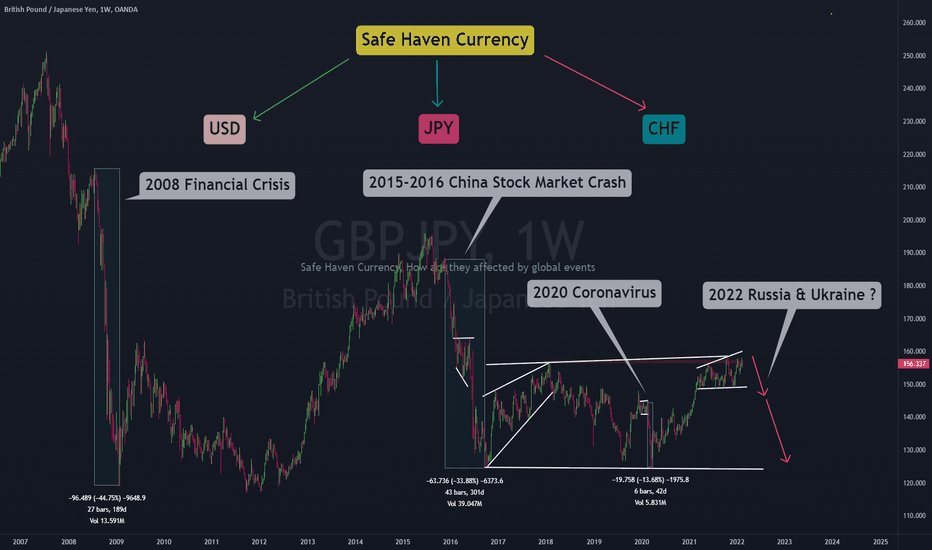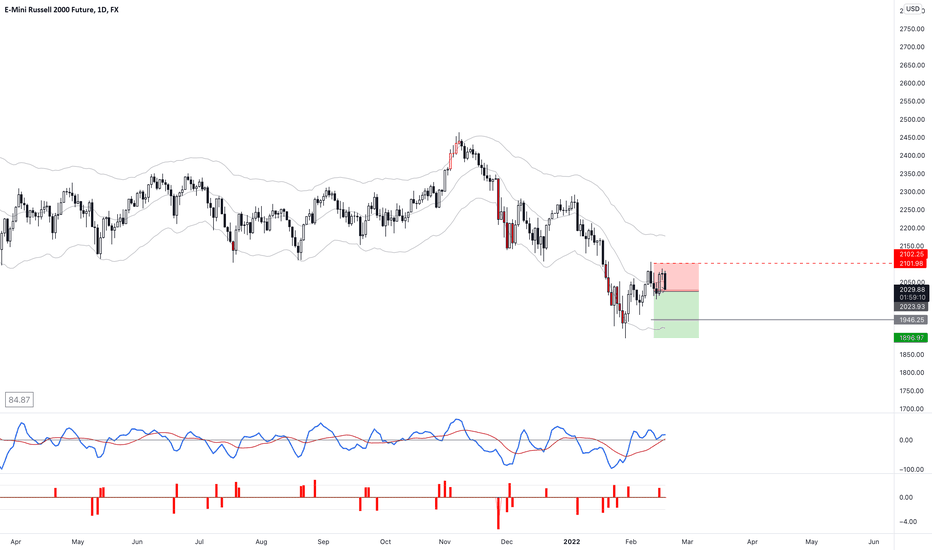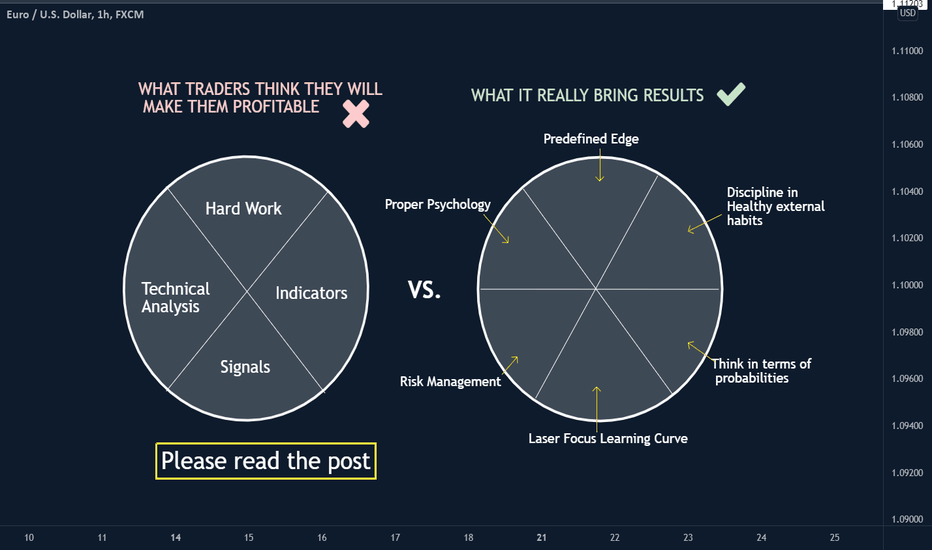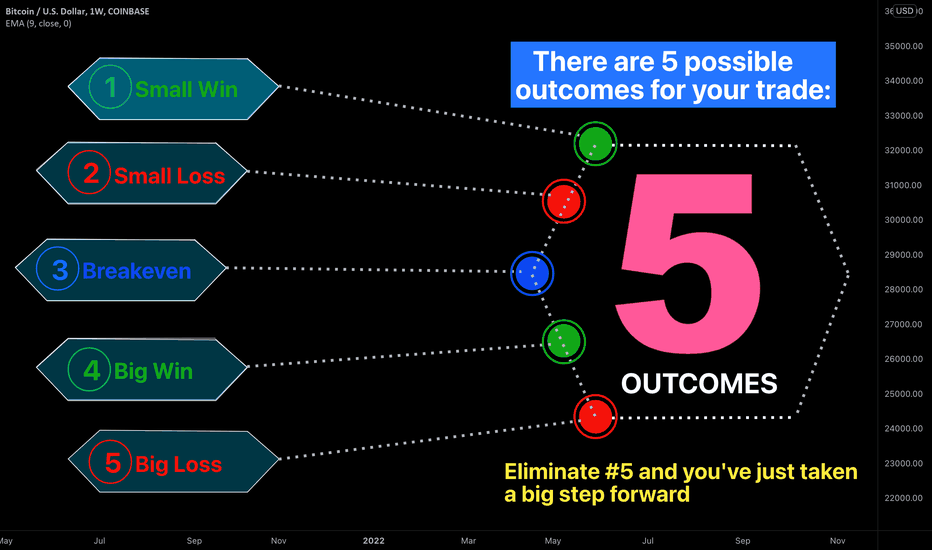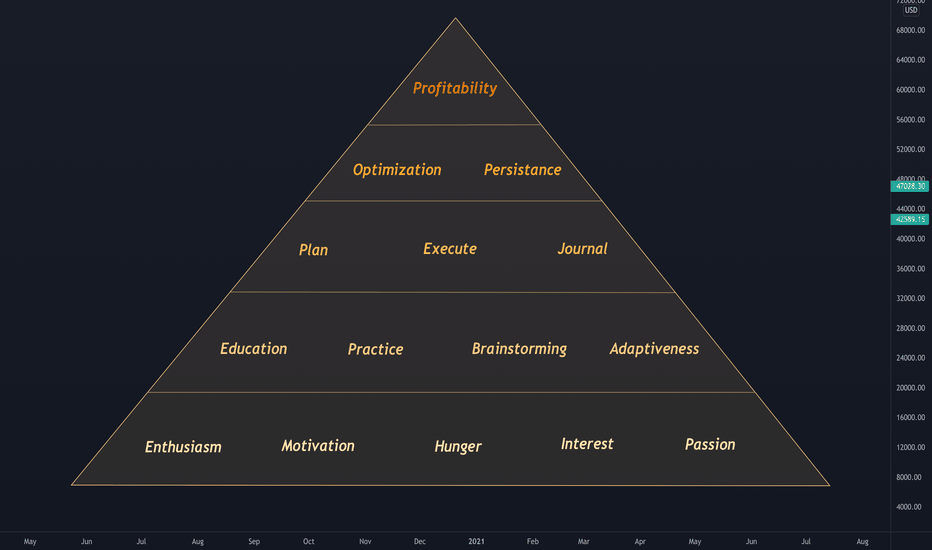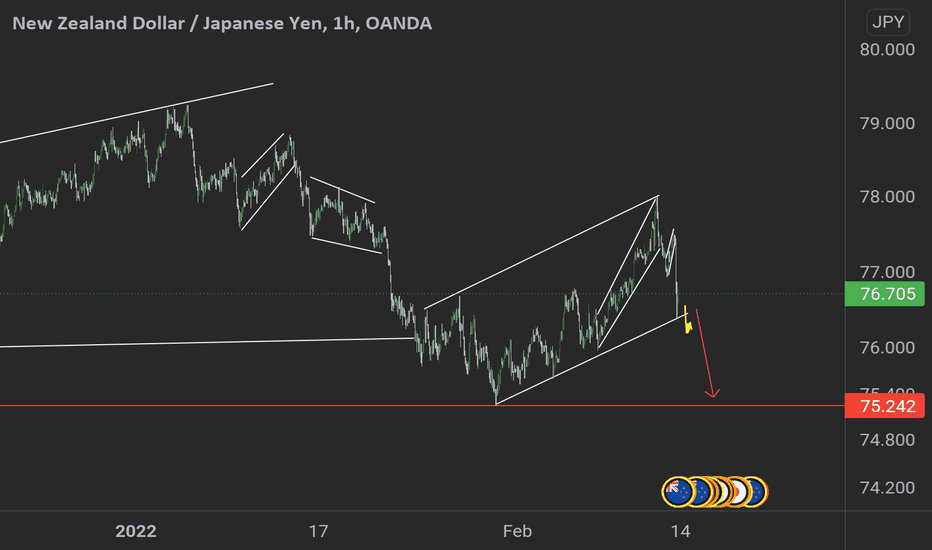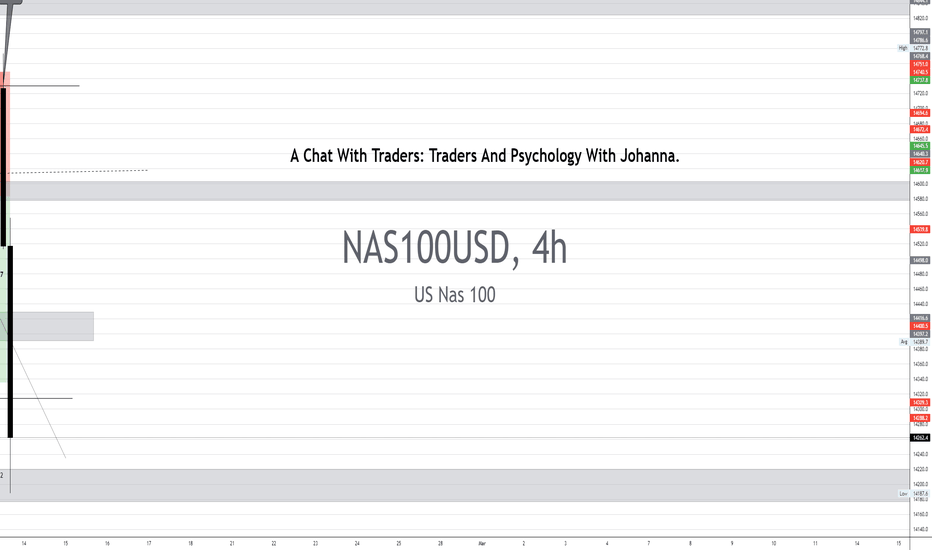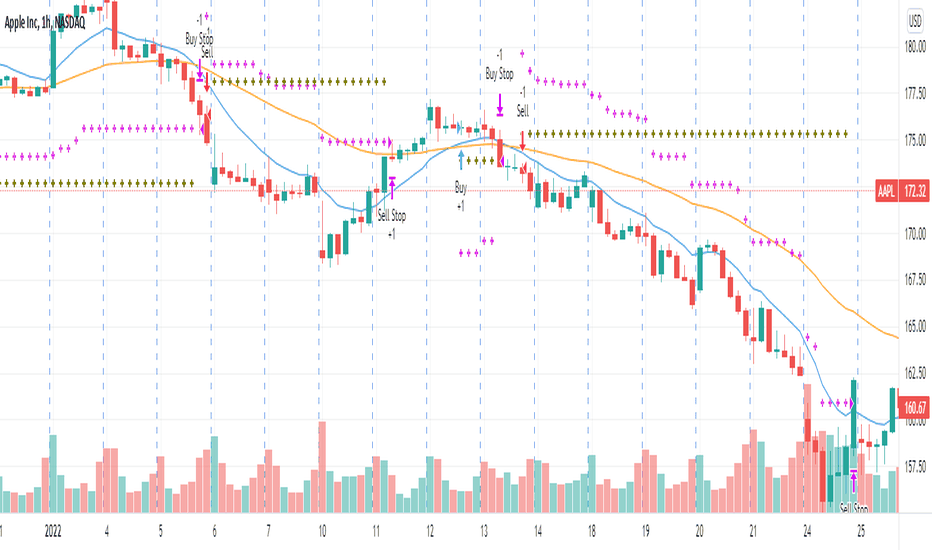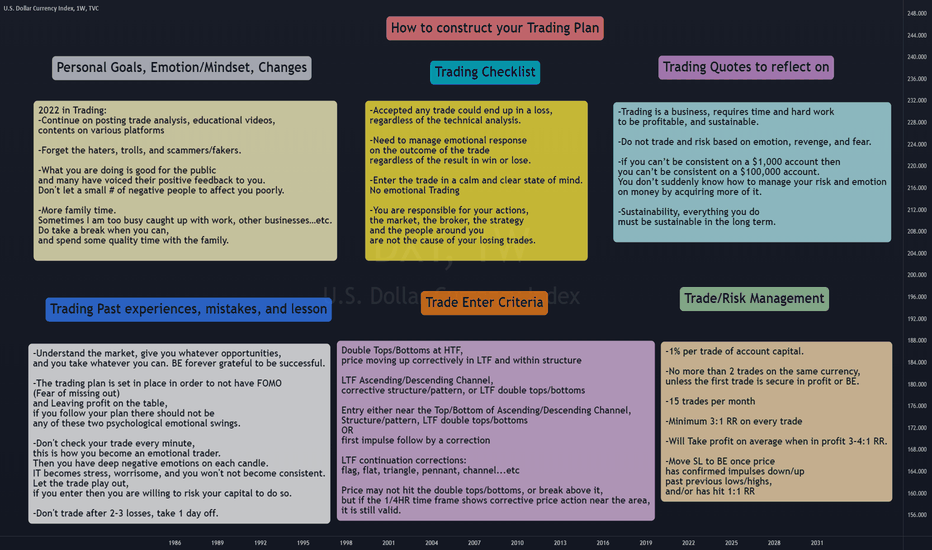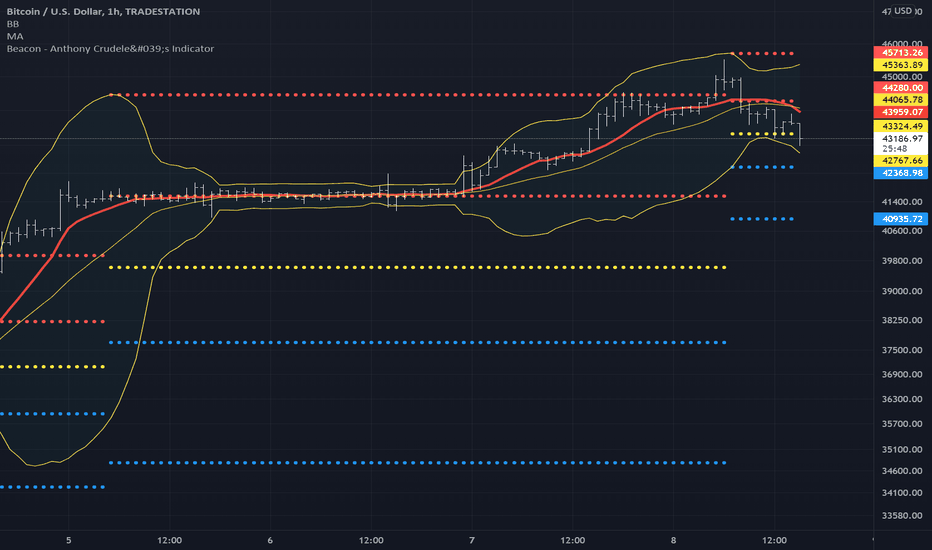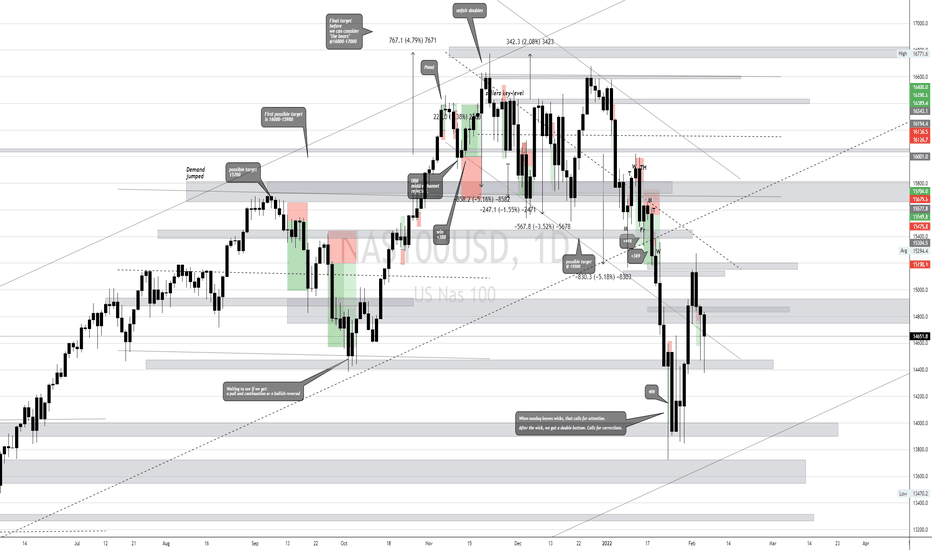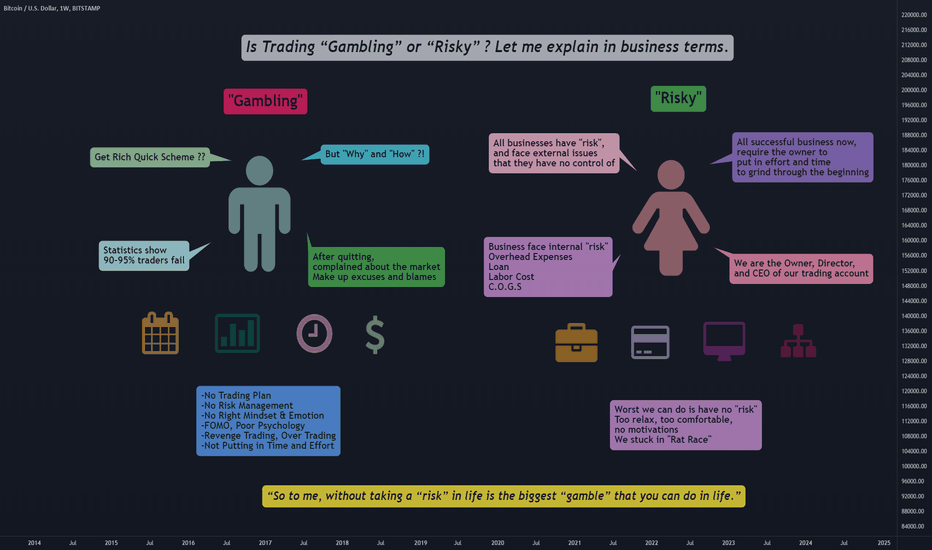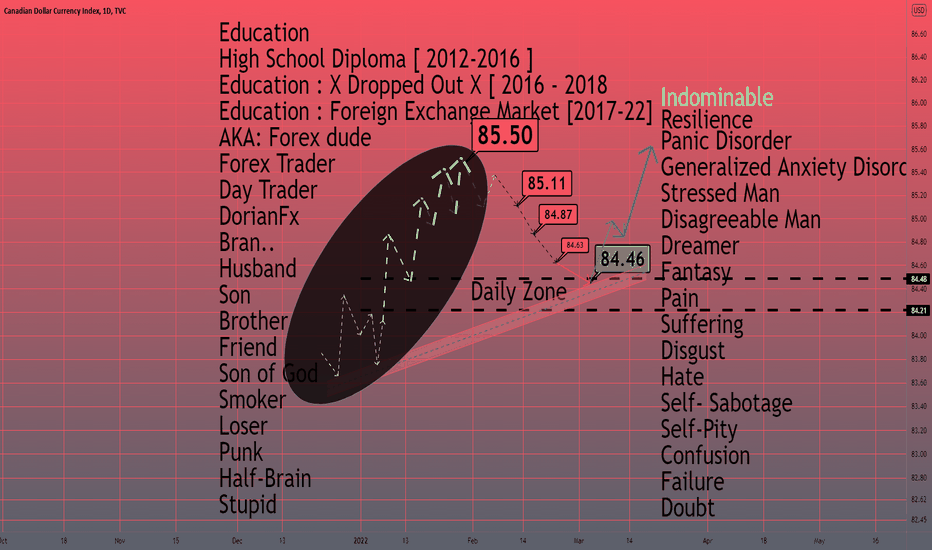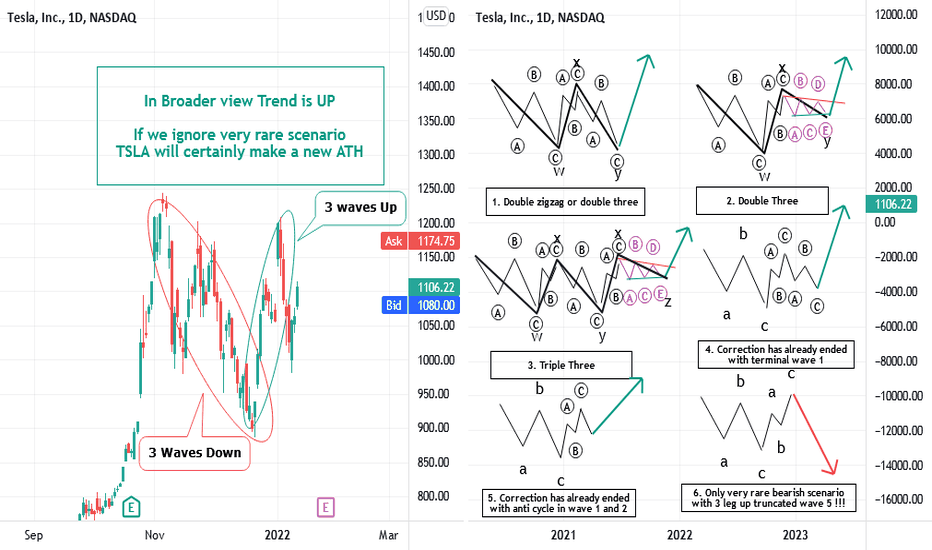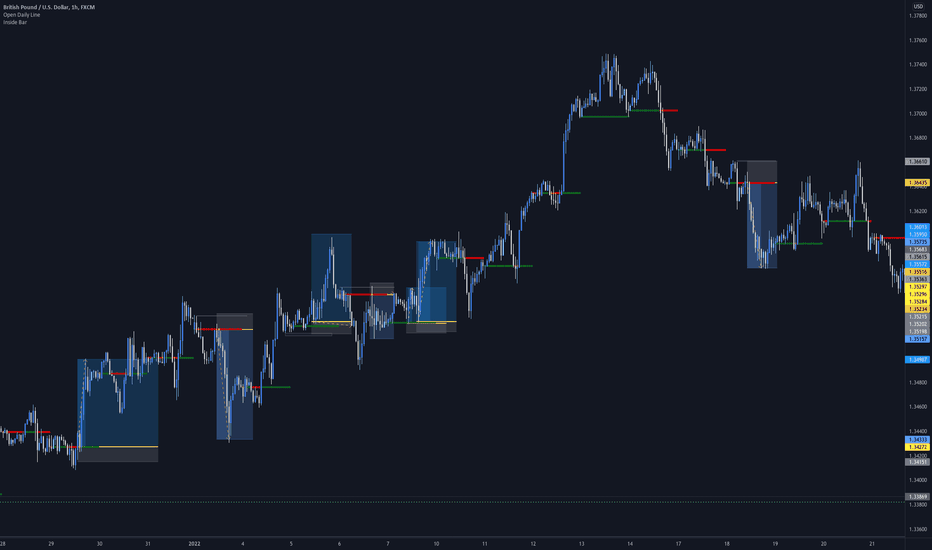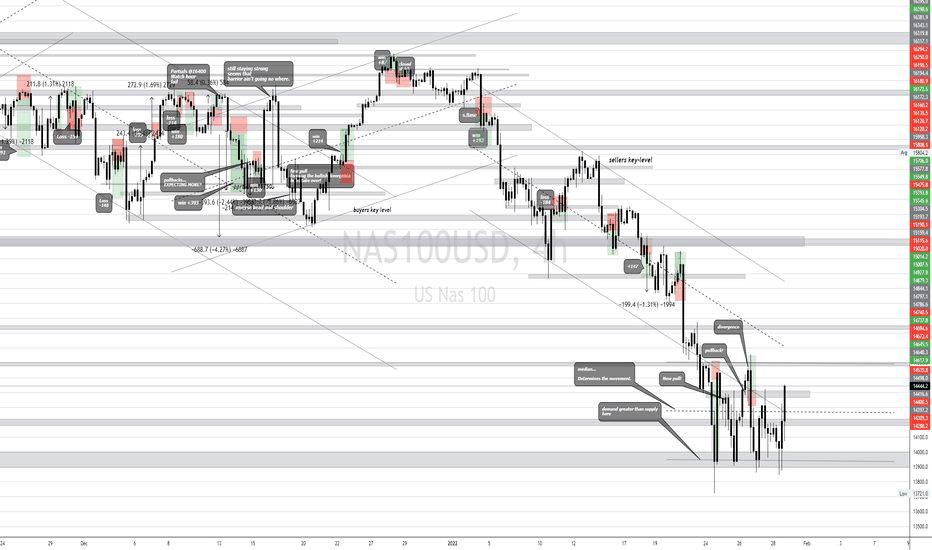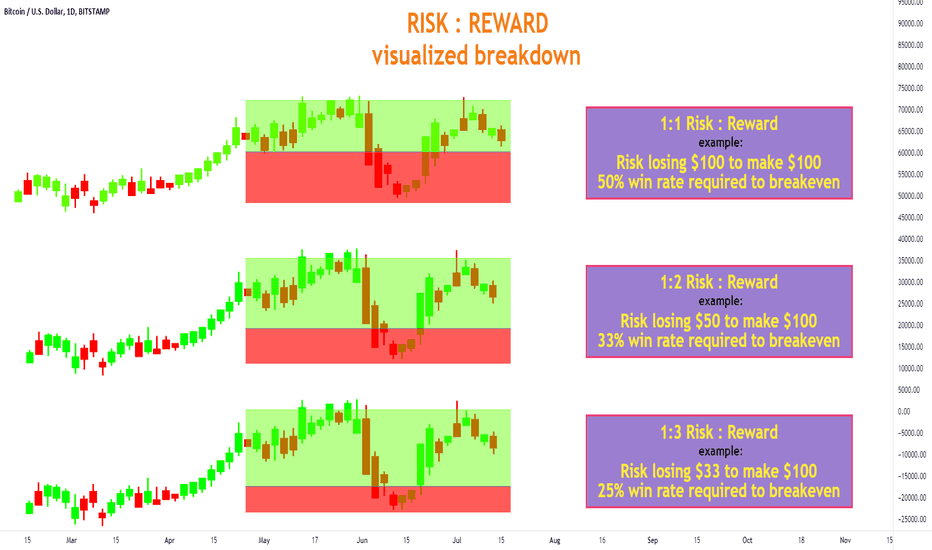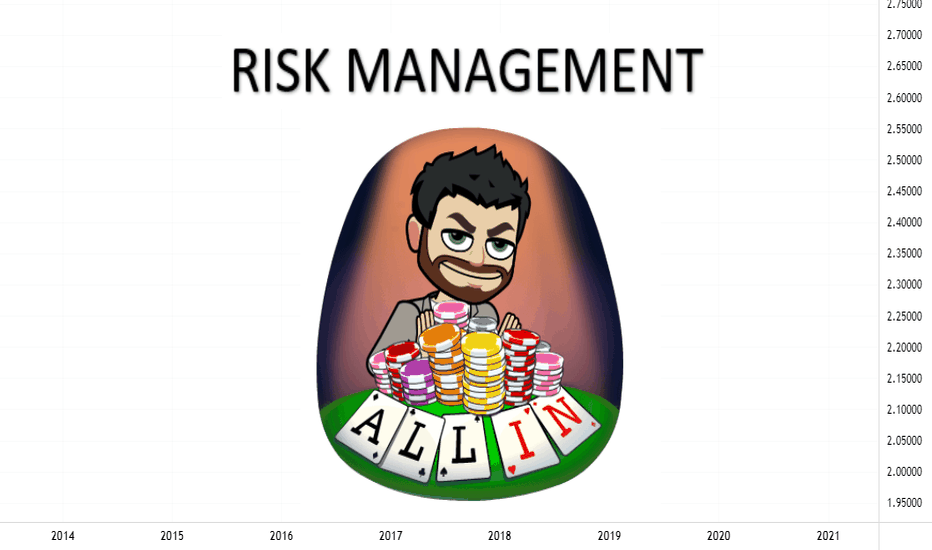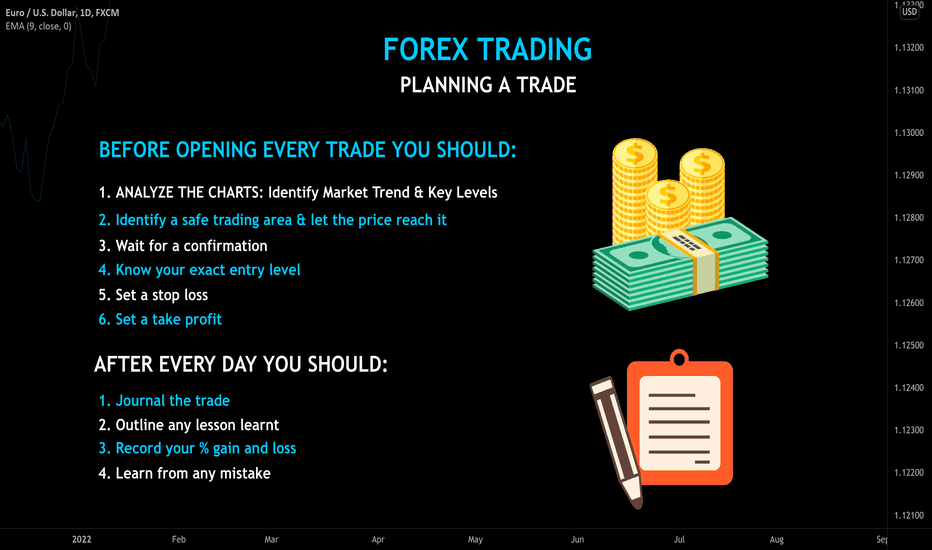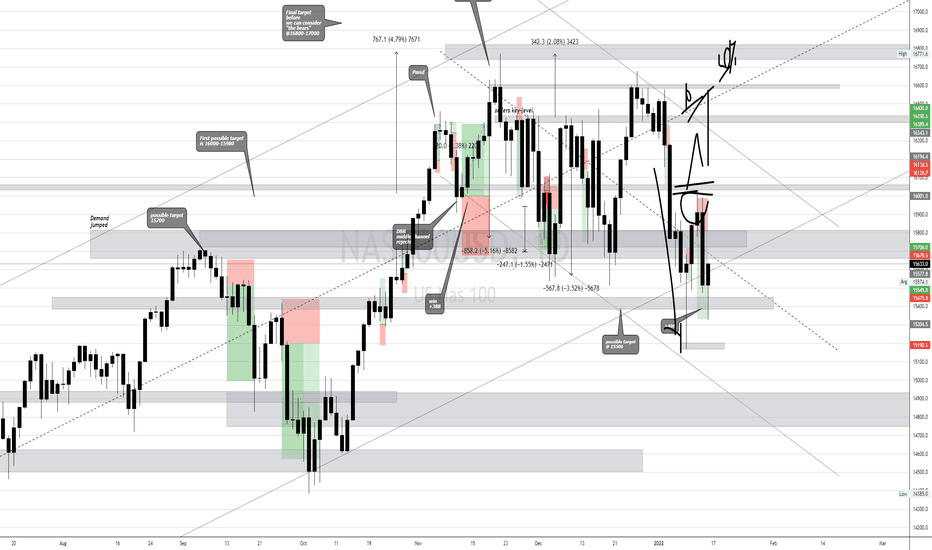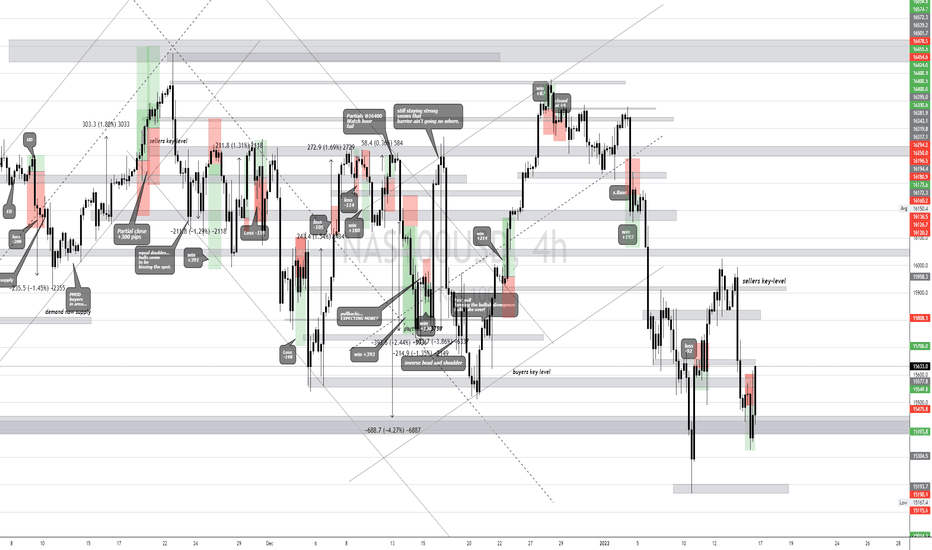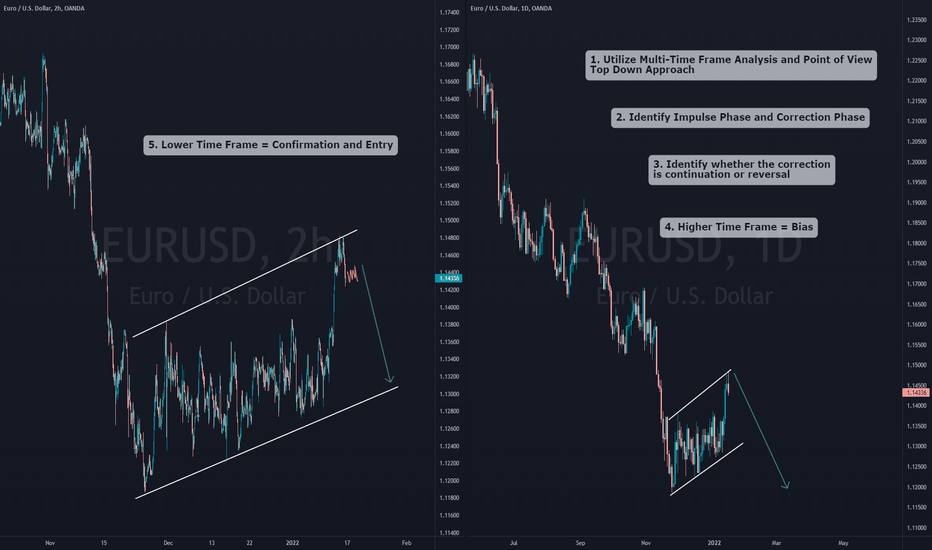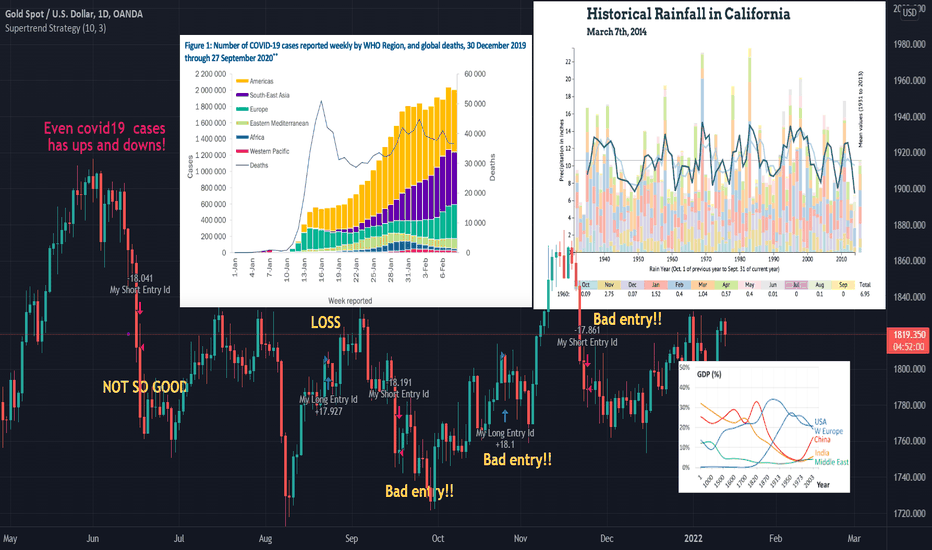Safe Haven Currency, How are they affected by global eventsHello everyone:
Want to talk a bit more about safe haven currency in the market.
Since the recent tension between Russia and Ukraine,
the safe haven currency could strengthen as a result of such uncertainty in the world.
We will take a look at some past history of these currency pairs,
how they react to the market at the time, and what could we reasonably expect in the current market conditions.
Safe Haven Currency
USD
JPY
CHF
It's in our interest to look for opportunities when a strong currency is paired with a weaker one.
This generally will move the price very impulsively with strong momentum.
Pair such as these below will potentially develop the best price action for good R:R trades.
AUDUSD
NZDUSD
USDCAD
GBPUSD
AUDJPY
NZDJPY
CADJPY
GBPJPY
AUDCHF
NZDCHF
GBPCHF
CADCHF
Always have good risk management when it comes to entering. Don't enter all the pairs, don't open too many positions,
and understand correlation between the currency pairs.
Thank you
DISCLAIMER:
-My forecast and analysis are NOT trading signals nor financial advice, you should not enter trades and invest solely on this information.
Jojo
Risk Management
Some points on managing positionsTake into account market structure when managing trades. There's times when it pays to be aggressive with cutting profits and tightening stops, and times when you need to let something play out. Having an awareness of what the overall market is doing and what the environment is like can help you make small changes that help you protect capital. For example, if you taking breakout/momentum setups, you are expecting to see momentum pretty soon after you enter. If it's not working as expected, you should reduce your risk on the trade as it's then become much less likely to work out. Being stubborn and leaving trades that aren't doing what's expected run for larger than necessary losses will destroy your chances of consistent profitability.
How to REALLY Become Profitable ? 🔥 (Education read)
Hello traders , today we are going to talk about a very delicate subject. Yes Tradingview is a place to share technical analysis with the community , however we should also share from our experience , what we believe it can bring value to the table and help other traders worldwide to become profitable. In that way , make sure to give a like and comment , eventually this post can become an editors pick and so reach a maximum amount of users of this platform :) let's grow together!
Okay now let's get into it ?
How To really become profitable?
The average human is not wired to properly trade the financial markets..We are wired in the worst way to be a consistently profitable trader. Trading goes against the human psychology. To all those learning to trade the financial markets, this game is not what you think it is. Most books and courses simply do not paint an accurate picture of the reality Most of traders think the only way to become profitable is by working hard and focus in the technical strategy and blindly following signals or mentors.
The truth is that all of that is absolutely wrong. Here's a list of 6 elements that from my experience are game changers to slowly extract consistent profits from the market. Do us a favor and share another in the comment section that you believe is important. Our goal is to make from this post a place to help us each other from our experience. okay , first and most important
Risk Management
That is the number one killer and doer.
For most traders; they open a position size much larger than they can handle or much larger than what is appropriate for their account size. They want to make miracles with small accounts. Do not chase the money , chase the skill. In that way money will eventually come. There are investors ready to trust you 6 figures if you prove them you can handle it like a pro. The problem is that by not really managing your risk you will let emotions run your perception. When emotions increase , accuracy decrease. Trading is a Game of probabilities you can do everything right and end up wrong and you can do everything wrong and end up winning.There is a random distribution of winning and losing trades in that way if you risk more than expected and the outcome is not in your favor you will end in a very bad situation , risk managemet is simple. You just have to Make sure to have a proper position size and manage your exposure or you will have nothing left to manage.
Proper Psychology
After all these years, I would say that the majority of trading the financial markets is primarily a psychological painfull skill. It is not an advanced holy grail system or strategy. For most traders trying to chase consistency, they believe their system always needs changing, and they focus more on the "analysis" side by reading more books and taking more courses, hoping to find that secret system. The system can be based on a coin toss, and with the proper psychology, this trader can outperform a psychologically-flawed trader but is using one of the best analytical methods. There are many psychological aspects you should focus. We can talk years about it. I advise you to read Mark Douglas for that. One of the most important things is to Dissolve all your fears . You must understand how it runs your trading.
You must understand and have a deep talk with yourself to see the way fear control your mind. here's 4 types of fears when it comes to trading : Fear of being wrong , Losing money , Distribute profit, Missing out .
By other side you must understand the neuro associative conditioning that created good trading habits and self destructive habits.
Here's some examples:
Pro trades see retracements as opportunity while newbies see retracements as threats
Pro traders have hope when they have a winning trade and despair when they have a losing trade while newbies have hope when they have running a losing trade and despair to distribute profits when they have a winning trade.
there is pleeenty of examples.
Discipline in healthy external habits.
As Paul Sartre said, we are our choices.
What we do with our 24 hours will define the kind of person we are. This is all about changing and adopting proper habits in your pro and personal life.
If you do have side issues like bad habits or personal issues in relation with (girlfriend / parents /friend / work etc.. ) they will make it difficult to execute a proper system in your trading. All those bad vibes will send resistive energy and when you get this energy you can either shut down or step through and doo exactly what you are supposed to do regardless. Take care of your personal habits and problems.
Avoid bad habits that drain your energy and focus here are some:
Wake up late and be a lazy procastinator vs. 5 am morning and doer
Partying 24/7 vs. Learning
Being lazy vs. being a doer.
Social media vs/ productivity.
Trading is not made for the undisciplined human being .
Before getting serious with trading, I I used to have a lot of bad habits that honestly, I’m not proud of it. But everything can change. The more I fall in love with the process and taking care of my habits and more my trading improve and happier I become. it's all about building a proper internal well being environment.
I will never meet a good trader or sucesfull business man or entrepreneur that is lazy , procastinator , that wake up late or that don't care about it's personal life.
Think in term of probabilities
This is a very important one , this one made me profitable. Mismanaging risk is a bad habit. Most of traders have the worst trading habits because they asume the outcome and they don't like to be wrong. They assume they know what the outcome will be, so they bail out of trades. They think it will make them more money, so they risk more equity in one single trade because they believe this trade is a high probability one that it will make them money. They have a trade by trade approach. they execute with a Can't lose mentality
They assume that after a few wins the next trade is likely to be a winner, so they are double up. They assume that after a few losses the next trade is likely to be a loss, so they do not execute or they reduce the risk. it's okay we all have been there.
By adopting simple proper ''SERIES OF TRADE APPROACH '' your outcome will change and you will become profitable in the long run
This is the approach that a few minority of the traders use. This approach is not based on predicting anything; rather this is a precise pre-defined system of pulling the trigger when your system or edge presents itself, and the outcome of the trade is irrelevant . You care about the outcome of a series of trades.
We take a series of trades, and we are entirely focused on the outcome of the series, and NOT the outcome of each individual trade. The outcome of each trade and attempting to predict the outcome of each and every trade is an uphill battle because humans are designed to expect what they predict. It is difficult to implement your system or edge in the markets flawlessly if we become attached to any one single prediction. The truth of the matter is that we do not know what will happen next; the only certainty is the markets uncertainty.
Having your own personal predefined edge
In fact, mentors can transfer you knowledge but never experience. You need to use their experience to create your own plan , you need a strategy and you need a flawless execution. there is no doubt either it works or no. make sure to set rules to find good trades execute those good trades and let those good trades play out. Trading is very personal.
Laser Focus learning curve
Those who make it in this business were laser-focused; they made a decision to either be right or wrong. A laser shines a coherent beam of light and is powerfully focused on a single point. That point will undergo immense heat or pressure. Same applies to learning to trade. It requires all your energy to be put forth on a single objective.
Compare this with a light bulb or the sun, which shines its rays outwardly with its energy distributed in all directions. You will barely feel the heat as the energy is unfocused and dissipates accordingly. This applies to those traders who have issues They doubt their decisions and jump from one strategy to another they chase the holy grail they change from system , they buy multiple courses , change of style etc..... There is million ways to make money in the markets but only you will make it with your own way. My advise is to Focus in one pair or few pairs, one session , a clear defined profit system, one pattern a clearly defined type of trading and that's it.
Make a decision, and instead become focused like the laser beam on what it is that you desire to develop, and you are more likely to achieve your target.
In order to keep in mind this remember this quote of Bruce Lee “I fear not the man who has practiced 10,000 kicks once, but I fear the man who has practiced one kick 10,000 times.”...
Thanks for your attention , hope it was helpful . Please make sure to support this idea and comment what you think about . Let's reach editors pick attention and grow together.
5 Possible Outcomes Of Your Trades | Trading Basics 👶
Hey traders,
Depending on your actions, you can get 5 completely different results
taking just one single trade.
1️⃣The first outcome is a small win.
By a small win, I mean a winning trade producing up to 2.5% account growth.
2️⃣The opposite situation leads to a small loss.
To me, a small loss is a losing trade producing up to -1% account decline.
3️⃣Occasionally once the price starts moving in the predicted direction, one can protect his trading position moving his stop to entry and making a position risk-free.
Being stopped out such a trade produces 0% profit. The level where the position is closed is called a breakeven point.
4️⃣If one perfectly predicts a future direction of the market and opens a trading position accordingly, occasionally, a huge profit can be made.
A winning trade producing more than 2.5% net account growth is called a big win.
5️⃣Being wrong in the predictions, however, one can adjust and trail a stop loss not letting himself be stopped out. Such behavior may lead to a substantial loss or even a margin call.
A losing trade that produces more than -1% net loss is called a big loss.
❗️Learning how to trade, I strongly recommend you eliminate the 5th outcome. Managing not to lose more than 1% of your account will substantially improve your trading.
❤️Please, support this idea with like and comment!❤️
Pyramid of Trading: a step-by-step guide to successHey, fam! Happy Saint Valentine's Day and welcome on another educational post. The topic is the following: a step-by-step guide to success in trading.
We all start somewhere, right? Something grabs our attention and builds instant interest that makes us persuade a specific thing. If you decide to interview a number of traders and ask them reasons why they had decided to become a trader, they will all give you various answers. One will tell you that his motivational driver was a random guy on Instagram that drives a Lamborghini Urus and claims that he is a day-trader. Another one will state that he has always been aiming towards building a great career and becoming financially independent and so forth.
Regardless of the background, all of them had started their trading journeys having the same drive, enthusiasm, passion, hunger, and motivation. One cannot simply succeed in this sector without being ambitious and eager enough.
While the above stated characteristics serve as basis of motivation, the next tier is one of the most important ones, as it sets the ground for all upcoming success and profitability. It is crucial to keep constantly learning, brainstorming, making yourself familiar with new stuff, applying the learned in practice, and adapting to the changes that take place both in your life and in the market.
After the fundament has been set, it is time to move to the main part: Planning, Executing, Journaling. First of all, if we have reached this particular tier, it means that we already have e strategy that we stick to and refrain from changing every week/month. We use this strategy to plan our trades and execute them once all criteria have been met. We journal all of the taken trades, both winners and losers.
Journaling helps us optimize our strategy and make some chages in it if neccessary. As market conditions change quite rapidly, our strategy and business plan should be modified as well in order to account for those changes. In addition, regardless of anything, we remain patient, cold-blooded, and trust the process.
After climbing all those tiers and reaching the very top of it, we can finally say that we are profitable and consistent, and we can enjoy the fruits of our own labour.
Of course, it is never as easy as it may sound, but long-term vision, patience, and ambition can take him or her to the doors of profitability. Thus, we encourage all fellow traders to keep grinding and strive for prosperity!
With love,
Investroy Family
5 KEY points to control FOMOHi Traders,
FOMO is a VERY real thing and in this post, I wanted to share with you 5 key points that has helped me control my psychology around this throughout my trading journey.
1. Accept the market can go in any direction; Neutralize your mindset:
The market changes very quick on any given basis and just when you think you have a perfect set up, it could take a turn and make profits turn into losses in matter of seconds. As you analyze the market, you need to have a neutral mind set understanding that price can go either way and as structures develope, you may need to change your bias and take a step back to look at the price action in a different view. If you approach the market in a neutral mind set, you are not "marrying" your set up and this helps reduce your emotions and builds your psychology.
2. Risk Management:
Risk Management is the holy grail in trading. If you cannot control how much you risk, you are simply gambling. Losses are inevidable in trading and you need to understand you will always endure them, but keeping the risk at minimal (1%) will sustain your capital to be able to continue trading. Keeping the same risk on each and every trade and maximizing your reward ratio will help you compound your profits and eventually your losses will be outweighed by your rewards.
3. If you missed the first entry, there will ALWAYS be another one:
Often traders will try and chase a massive drop HOPING that price will push down further when in fact could catch you with your pants down. Understand that there will ALWAYS be another entry that may fit your trading plan. If you missed the first one and start chasing volatility rather then sitting on your hands waiting for another confrmation, your judgement gets clouded which will the create revenge trading, greed, FOMO and capital loss.
4. Take what the market gives you; leave your EGO at the door:
Any experienced trader will tell you to check your EGO. Just because you THINK the price will go to your target, it doesn't mean that it will. Price does not need to reach your target for you to be profitable, taking your profits as the market gives you will make you profitable. As the market moves and creates structures, at times it may not be ready to continue to rise or drop and that is why you need to manage your trades accordingly and adjust your mindset to acheive this in order to avoid uncessary losses.
5. Have a Trading Plan & Follow your Trading Plan:
Having a Trading Plan is key in order to know when to get in or out of the market. If you are unable to identify your profit targets/stop levels, entries, exits etc. you are doomed to fail. Following a plan will help with consistency along with many other areas towards the road of success. Implementing a plan is just one area which will help gain confidence in this business, its what that plan entales which will help you succeed in this business.
Every trader that has they're own trading style, plan, management and mind set and there is NO right or wrong in trading as long as you are following your plan and your decision meets your criteria.
I encourage every trader to review your plan and make necessary changes as your journey continues to achieve greater results.
Leave a comment and and share your thoughts around this topic :)
Click the like button if this has helped you! Support more of these to help our community!
Enjoy your weekend!
A Chat With Traders: Traders And Psychology With JohannaJohanna a 22 years old forex trader—with an enthralling background and compelling story. The Sudanese trader’s story starts from: Cameroon and Norway. Johanna was born in Cameroon but, bred in Norway.
According to her, “emotional intelligence is a crucial part of forex trading”. Albeit, traders don’t really talk about it. However, she prefers to trade in a converse way in relation to other retail traders. “I didn’t know I would be so affected by psychology in this game”, she mutter. In addition, “I’m a risk-taker. I love taking risks”.
Who is Johanna?
Originally from South Sudan, born in Cameroon but raised in Norway. I am currently both: a dental student and an upcoming day trader. Was first introduced back in 2018 through another female trader posting it on Instagram but—because of fear and lack of motivation, I did not take it seriously until late 2019.
Had jobs in different branches: from store employees, elder homes, and customer service. None of them have really fulfilled my perspective of living my life on my own terms.
So when I got introduced to trading, I knew it could give me the freedom I was looking for. What I didn’t first know, was the work, effort, and knowledge that was required. My first initial thought was to give someone else my own money to trade for me whilst learning, just for me to become a victim of scams on my earliest day.
Moving forward, after almost 10 months of trading live, I’m looking to get the right skill needed for me to handle the market in the long term but also educate and inspire more females to join the industry.
Woah, Johanna that’s some kick wass intro. I wouldn’t continue until this question is asked though. How long have you been trading? How did you learn forex and come to know it?
It has already been year on a live account. But, I was 5 months on demo before that.
Johanna’s On Trade And Psychology
The previous chat I had, inspired this particular question. Social media has allowed us as traders to have a wider footprint outside of the forex industry, what do you think your impact is in the industry?
The industry is heavily male-dominated and I really want females to contribute and represent another side. I’m also big on learning the right skills; from the right people so you don’t get scammed easily in this industry.
That’s you speaking from experience there. Right? Do you have a special way you trade this particular pair? If yes, can you share a tip for that pair?
My approach is a bit different: as I look to trade the strongest and the weakest pairs. I will therefore look for these pairs during my market preparation—this will also help me to understand the directional bias for further analysis.
Hey, Johanna—are you a technical or fundamental fan?
Technical and fundamental. I personally feel like both are important to have an overall look of the market and why things happen the way it does.
Without a doubt. Loving the way you’re handling this questions. What is your go-to strategy? I would also love that you explain: why that is your go-to. Do you have a major reason why you chose that strategy and how it has helped in improving your trading.
I like trading the opposite of what retail traders generally do, and as an Intraday/Swing trader, I prefer to look out for major liquidity grabs and trade from those areas.
“The opposite”. How can you tell—Just a curious cat here. By the way, Who/what inspired you to start trading? If you have a mentor, what’s their name and what about that individual inspired you?
Haha. The freedom to be able to trade from wherever and whenever I want is—definitely the inspiration. Those who inspired me are: Melisa Hilma, Cue banks, Forex with ally, and the Gold father
It’s research time for me—I guess. However, still on psychology, What keeps you sane? Because I won’t lie—trading can stress you out and some even get depressed. So how do you overcome this?
Hmm. I trade with an amount that doesn’t affect me, adjust my risk management to a level where I feel comfortable trading, and ready psychology books both for trading and personal development.
Okay, that works. Especially the reading part. I know this particular question may sound weird. The reason asked is: as humans we have the whole “act now, think later” thingy going on even when it’s not the right thing to do. So, do you have a trading “guilty pleasure”? If “yes” what is it and how do you handle it when it happens?
Made this mistake a lot in the beginning. Albeit, I’ve tried to work on being very strict and journal every time—I might do this mistake to then go over it during the weekend. If greediness occurs, I really need to take a step back and look at my plan, checklist, and rules before taking a trade.
Someone’s disciplined. Tell me—what are the three traits you have that keeps you successful? And what three traits do you hope to have in trading that would make you a consistent trader?
A big risk taker, I love taking risks. Being consistent and systematic as a person, also helps me become a better trader and the appetite to always learn something new! As a trader you meet so many challenges, you can never be bored!
Truth to that. It’s amazing the discoveries one can get from just trading. Speaking on bore-dom—When you’re not trading, what are you doing?
I study, read and I like meeting friends. In addition, the Corona virus has also made me start watching some new tv shows. I love to bing watch them on: Netflix and HBO.
Yeah being hooked on some shows as well. Tell me about a time you disagreed with a decision. A time you didn’t follow your trading plan. What did you do?
There was this one time where I did something. Though, I do not recommend it. Took a trade into a news event. That’s personally against my rules. I still did it and it went away for a while before it reversed and hit my stop loss. The worst part was: I was trading Nasdaq100 (indices) that moves very fast and can easily blow up your account with one bad move.
Eish! I can definitely relate. Nasdaq’s my field. How do you handle pressure, impatience, fear, doubt and greed in forex?
You know what, I don’t work well under pressure—so, I can’t be dealing with anything that might pressure me to do something outside my plan. I’m actually a very patient person and I haven’t really rushed in the market. Things take time and I accept it. I might doubt myself sometimes but I keep thinking that others have done the same but they are now in better situations. Same thing with greed. Greed will test you in the market but, taking control of that earlier in the trade will help you a lot. I take what I can from the market and I’m happy with that.
Well said. Johanna. Let’s visualize now. So what would you want your forex dream to be like (in details).
Too many dreams. My forex dream is just one of many things I need to accomplish. Being financially stable from forex is the first step, but investing in other assets and businesses is as important as my drive to learn forex.
Investing, compounding. A great dream. Who is one person/academy you think Neophyte or everyone should follow and why?
Really look up to Melisa Hilmi, the first person who introduced me to forex. She has a genuine drive for the market and has an amazing course from beginner stage to advanced. Also, she has an amazing track record, history and I appreciate people who do their own thing.
Haven’t really heard of her. Another assignment for me. What are you biggest strengths in forex and What’s one thing you think you are very good at in forex?
I’m a big risk-taker. This makes me less emotional when I trade: as I’m not attached to money—the same way as many might be in the beginning.
“Big risk-taker” That means you probably won’t relate to this question—But, Have you ever tried quitting? If yes, what did you do about it?
Yes. I took 2 months break after I got scammed and was really depressed. I got back up knowing that it was just a mistake. Trading is still something I should be able to try out but by myself.
Ouch. So sorry about that. By the way, speaking on losses—What was your greatest loss, how much was it?
My greatest loss so far is: $6000 in 2 days.
That’s crazy. What motivates you?
Being able to change how I and my family live. My younger siblings motivate me—even more. I want to give them much more than what I got when I was younger.
Aww. That’s so sweet. In trading, how do you manage a trade when in it?
While the trade is running, I make sure I have alerts on areas of key levels. I might check it one time every hour and might adjust my stop loss to make the trade risk-free.
I’m curious now. What’s your trading plan? And what is your go-to assess class (what pair(s) would you consider are your favorites) and why do you prefer these pairs?
I start off by looking at major news for the day/week and look out for events that might affect my trades. Most of my market preparation for the week happens during the weekend and I will focus on only executing my trades after that. I look for high probability trades and I have a checklist I mark off before, during, and after the trade. They include: my entry rules, exit rules, risk management strategy, and how I will manage my trade while it’s running. My favorite pairs are: GBP and NZD pairs.
Johanna speak on the Industry and It’s Newbies.
Hope to see your watchlist someday. I always ask this particular question. What’s your take on Neophytes that want to learn forex? Do you prefer they paid for the knowledge or stick with YouTube videos and free materials.
Spent a lot of time on YouTube and it helped me but—you should also take a course: as the information can be overloaded with free materials.
Yeah. Lots of free courses everywhere. Learning everything can be quite exhausting. This may sound “cliché” but why forex? What is your major reason for choosing forex?
Not funny but, I was first scammed in the crypto industry—I backed off from that. Then forex seemed like a reasonable market for me as it involved more than just studying currencies.
Lot of scamming on your part. Moving forward. We all talk about trading psychology, what can you say about that?
Didn’t know I would be so affected by psychology in this game. Pay attention to every move that affects your mindset and work hard on improving it.
Needed to hear that from you. Because, I think psychology is one of the most important—if not the most important part of trading. So, that’s why I’m laying emphasis on it. What are your trading rituals and how has it helped your trading?
When looking for high probability trades, I only take trades that matter hence—why I don’t need to take many trades every week. I stay out of bad markets and back-test my weekly losses.
Back-testing, important. What are your trading aspirations? I know many trade for “financial freedom” but what happens when that’s achieved? What do you plan on doing with trading?
Plan on making an educational space. Not just within trading, but also in finance. There are many opportunities out there: to better yourself financially. However, I see many people don’t take that chance due to: either lack of experience but also fear of losing money. I want to motivate more people to go for what they want.
Good-luck on these aspirations Johanna. It’s a great idea. What would say is your “win-rate” and what really drives results in your trading?
I would say I have a win rate of 68-72%. My results are driven by hours of back-testing different pairs and their movement.
Not bad really. Did you have a job though. If yes, What was your salary in your last job before forex? Was leaving it for forex worth it and why?
$1300-1700 a month. Definitely worth it. Not looking to go back to a corporate job anytime soon.
Haha. Forex stole you away. Tell me how you think other people would describe you. What do you want to be remembered for in the industry?
Very social and outgoing. I want to be known for someone introducing the market in a different way by: showing them both obstacles and good days. There’re too much fake lifestyle on social media.
Well, most are great marketers. Others, for social status. Do you keep a journal? If yes, what does it consist of?
Yes, I do. I have different sections where I journal my market, pips achievements, losses & wins, my risk percentage, and personal processed thoughts I had during the trade.
Nice. I’m really grateful for your time. Although, I won’t be leaving till you tell me about the toughest decision you had to make in the last six months. Was it a trading decision? If yes, tell me how you handled the situation.
No worries. Quitting my last job. It was a hard decision but I knew it was the right thing for me not only to pursue my trading dream but—also be able to focus on things that make me happy. I don’t regret it at all.
That’s tough. How would you describe your ideal work environment?
My ideal work environment is essentially an office filled with other female traders working to help and educate other upcoming traders like myself on their journey.
Yup. You’ve definitely got a great belief system. I’ll be looking forward to this Ma’am. You know we have the Neophytes now in the industry. In fact, more Neophytes are trooping in. What’s your advice to them and what would you recommend they start with?
Simple. Throw away the whole “I’m going to become rich in a few weeks”. Focusing on the money aspect will really turn your motivation off in the beginning as: you don’t even have the skill set. Focus on the skillset, and the money will come along.
Process first, then outcome. You couldn’t have said it better. What would you consider to be your biggest forex achievement? Tell me about a forex accomplishment you are most proud of.
When I was profitable enough to quit my job. It takes time, and I’m nowhere near where I want to be but—I have at least come a long way.
Positivity goes a long way. Do you have weaknesses—What are your forex weaknesses? How do you plan on going about them? Have you succeeded in doing that?
Social media can be a very scary place and as an upcoming trader, you will encounter a lot of different things. Comparing myself to other traders is a weakness of mine, but I keep reminding myself that their journey is different from mine and we all have our own path. I don’t really look at other traders that much anymore and just focus on myself and my own journey.
The media, if used wrongly is a deadly disease. Proprietary firms are in existence now. Do you trade for any proprietary firm? If yes, which one and how is it going?
No, not yet but I’m looking to take the FTMO when I’m ready.
Finally, before I leave you Johanna. How long do you plan on trading forex and Where do you see yourself in five years with forex?
Plan to stick to my written rules and risk management. I also look up everything that I don’t understand and learn from it. Progress is my everyday mission.
Combining both Trailing Stop and Stop Loss in percentagesBoth a trailing stop and a stop loss are necessary tools for every trader, for locking in as much profit in any given trade, while on the other hand minimizing the risks involved in trading.
I started to write this scipt to give an answer to many traders who wanted these two tools combined, but didn't find any way to program this.
TV has some shortcomings in the built-in functions regarding this topic. You can use 'stop' and 'limit', or 'loss' and 'profit' and even functions with trailing stops. But all of these lack the flexibility of the use of percentages.
I used many ideas of the community, and with this scrip I want to give back to the community.
The strategy is just a simple crossing of two Exponential Moving Averages, so do not start trading based solely on this script.
Also keep in mind that no two assets are the same, and adjustments should be made in the configuration for every asset.
This script should be viewed as a template, just take out the chunks of code you need. A savvy programmer can undoubtedly implement a 'take profit' of 50% halfway down the trade.
The features are:
-Everything is easily adjustable through the configuration section
-2 EMA's which form the strategy to go Long or Short
-Trailing stop, which adjust itself every bar according to the configuration
-Stop loss, which uses the entry price of the trade and stays at the same level according to the configuration
-The chart provides a visual reference for the levels of both stops
Happy trading!
How to Construct Your Trading Plan 2.0 Hi everyone:
Today let's go over a trading plan in more detail. I have made an educational video on this before, and many have asked me to create a more in depth breakdown on this topic.
So let's take a look at what topics to include in a trading plan.
First, what you should understand is there are no set guidelines of what exactly you should include in your trading plan.
Most traders will have different approaches on this topic, and some will have similar ways of constructing it.
What is important is this is something you will look at on a regular basis.
You will add, remove, edit your plan so it is the most up to date with the information you want to include in.
You should NOT however, just copy someone else’s trading plan, since it won't be applicable to you.
Below I have outlined the 6 main topics that I include in my trading plan, and I will go over each topic in more detail on what can be included in.
Personal Goals, Emotion/Mindset, Changes
Trading Checklist
Trading Quotes to reflect on
Trading Past experiences, mistakes, and lesson
Trade Enter Criteria
Trade Management
If you have any questions, feel free to let me know :)
Thank you
How To Use Bitcoin Futures To Hedge Your CryptoYou are either a trader or a HODL'er. Since I am a trader I don't like to sit in massive swings in my spot Bitcoin positions, I like to use Micro Bitcoin Futures to hedge my spot position to minimize the risk and also maximize my long position in spot. In this video I explain how I am currently hedging my long Spot Bitcoin position using Micro Bitcoin Futures, Symbol MBT.
Past performance is no guarantee of future results. Derivatives trading is not suitable for all investors.
The Trader As An ArtistArtist What is art? I hear people say that word (art) a lot. In my opinion, everyone should stick to what they consider it to be. These arguments have been going on for the longest time. Ain’t stopping soon. Funny, when most hear the word “art” they’d have already imagined: the Da Vinci’s Mona Lisa or Vincent Van Gogh’s Starry nights. Art is actually one of the first way we learnt to explore the world—Through its elements and principles.
Today I opened my desktop… or is it laptop? Any-hoo, that’s not the point. I opened this piece of work and decided to do an in-depth research on the definition of “art”. According to the Oxford languages, They said, “Art is expressing or applying human creative skill or imagination in visual or non-visual form”. Honestly, I don’t even think that’s the definition I was looking for. I mean—not everyone knows they have the “creative skill”… What’s this creative skill anyway?
A creative skill is basically the ability to think about a task or problem in a new or different way. Meaning it can be anything right? P.S—Some-one said, “the best creative skill anyone can have is patience”. So are you trying to say, I need a creative skill to do an “art”. Huh… Well… Hey now, don’t get me wrong I’m not trying to argue with oxford. Maybe that’s their view of this word. Who am I to judge? Like I said, “it really can be anything; any-thing you can think of at all” here’s why:
Is Art Just About The Creative Skill?
Talking with Jules the other day—I heard her linguistic teacher say, communication is an “art” of… Wait, hold up. Heh, so communication can be an art. I mean—people do this thing everyday, How else is information passed if not through communication. All the definitions I’ve looked up on the word (art)—has the word “skill” in it. Any skill at all. I mean if oxford says the skill has to be creative well, their problem.
Ergo, can we say, we all do “art” in one way or the other. Lol! I just felt insanely proud saying that out loud.
Anyway, my view point is—the definition of art is subjective, we’re all right. Art is basically anything. It’s a language. Not just a thing, can also be a way. Anything that can be done by us humans (mammals), is definitely an “art”. I might be wrong but, I’ll come back to that.
What Is Art?
Back to my definitions—Then there’s that word “imagination”. You know what, I believe anything you can imagine is an art. Defining art is hard because—there’s no right or wrong in the definition of art. If you go on the internet now or ask someone, you’ll hear gazillion definitions.
More Definitions Of Art
Leo defines it as: experiencing an emotion and transmitting it onto others. A creative work of a human. It’s more than practice, it’s a way of life, Form of expression, quality of doing something. Also, An activity that manifests beauty, and The mastery and ideal way of doing something.
The definitions are infinite. Till today, the definition is subjective, open, debatable—It’s so amazing how one thing can mean different things. Art can be an emotion or feeling, an expression, imagination… It’s such an interesting word.
You watch movies and you cry, how exactly can a movie make you cry? How can one be so talented in evoking: feelings, moods or emotions on others—just by a single act? My British friends will say, “Amazing inn it”.
A Work Of Art
There’s a term that intrigues me, “a work of art”. Since the word “art” there is subjective it can be anything you make it to be. Art is an expression. Your job can be a “work of art” That can mean different things to different people.
This Friday, I took a stroll on google—came across Anita Louise’s blog. Anita made reference to an artist who said: he’s art has no meaning. She says, “the no-meaning is the meaning”. That took me down memory lane. I remember my first sculpture class in—art class, we were supposed to create whatever anything at all. Mr. Jake said, “become art”…
Heh, I remember picking tooth picks, more than a thousand of them. Had no clarity of what I wanted to make. Decided it’s best I play around with it. In the evening, I discovered that it gave me some kind of shape that I couldn’t describe. That piece didn’t make sense to me. To my out-most surprise, I scored the highest. Jake said, “Woah, Jamal this is interesting…” it made him curious. He also stated: that’s exactly what art means.
Mr. Jake’s statement left me in a state of awe.
That’s the message Anita was trying to convey. Most times—the meaningless art pieces are so intriguing that it becomes meaningful. That’s the beauty of art. The language of art is about appreciating any and everything—bringing the most senseless things to life.
Art And Interpretation
For you to interpret art, you need to ask yourself three questions:
What’s the meaning?
What’s the message?
What do the patterns mean?
In philosophy—the point of view is different. It’s grouped in two ways: Intentionalism and Anti-intentionalism. Intentionalism is: viewing the art from the artist perspective, whereas—Anti-intentionalism is: viewing and interpreting it from our own point of view—based on how we feel about it. The gift of art is that, no two persons can have the same interpretation. That’s what makes art very unique, interesting and fun.
In an art class, if a still-life composition is placed in front of you, most artist would decide to do hyper-realism, others a sketch. The shading is different as well, That is, some would use pointillism, others hatching, cross-hatching or scribbling. What I’m saying in essence is: it’s all about the interpretation and expression.
After the class, you’d hear different interpretations. In all honesty, Art is such an amazing thing. Not just in drawing but—other forms as well.
Types Of Art
Listen, I know the main topic is, “the trader as an artist” but I need you to stay with me—see where I’m headed. The main purpose of this topic is: to appreciate the art of trading, to give beauty to the person behind these charts. In addition, to appreciate something is to understand the meaning behind that thing—more on this in—the principles and elements of trading. Colleges today, galleries or wherever people get their information from these days will tell you—there’re two types of art: visual and Non-visual.
Visual art—The term “visual” means sight, to see. Therefore, visual art is an art of vision. It involves the art that’s seen and felt psychically. Non-visual art—In addition, Non-visual art is an art of the soul and the brain. This type of art—can’t be seen but rather felt, it evokes feeling both good or bad in humans.
Who’s an artist
On Saturday, I went to the Library to check-out the new books. There’s a book on objective and subjective POV. There was a write-up, “when you become objective about art and not just subjective, that’s when you start to see artists all around you”. The carpenter in your neighborhood or the gardener across your yard. The writers, traders… Oops, I just said traders. Of course why not. You may not create a master piece that ends up in a museum, but, if you find yourself involved or doing something in your life that—combines a sense of purpose with practiced skill, honey, you’re an artist.
Mark joined me in the library, I wasn’t even paying attention to him, because I came across an article that said, “Trading isn’t an art”.
The writer said, the statement is ridiculous. That you can’t bring Picasso or Gogh into the picture. That really got me irritated. I find it funny how rigid one’s mind can be. To the writer everything “art” should either be a painting of some sort. Years back, I remember when someone asked what I studied—I’d tell them “art”, the next question that pops up is—woah, so you can draw? Pfft, man I get so tired.
Back to the article, I mean he’s definitely an artist Cos’ his piece got to me. Anyway, the one who’s good at something especially if it involves something with skill—that’s an artist.
What Is Trading And It’s Relation To Art.
Trading is the act of buying and selling. Everyone can buy and sell, but, not everyone can do this consistently—without having your emotions involved in someway. Buying and selling isn’t always a positive act, especially if it involves money. Your emotions come to play. Controlling them is what makes you successful in this act. Right? That’s where the skill comes in. Since I need to acquire some sort if skill to become great at this profession, Why can’t I call trading an art?
Without the skill, you’ll lose.
Art requires skill; trading requires skill. What more do you need—That’s equilibrium there. This isn’t some sort of debate though. Not debunking anything. In other words, trading is an art since it requires a skill. There’s a saying that trading is a pattern and number game. Ergo, if trading isn’t an art, how do you recognize the pattern? There’s something called “pattern” in art. A pattern is a repetition. It also involves the elements of art. However, I could go on and on. My point is, trading is an art; a trader is an artist. Finis.
The Trader As An Artist
Since I parked my bike outside, I’ll probably go pick it up. Most people don’t know this but, traders are probably one of the smartest people ever. These guys have mastered the art of emotional intelligence, self-control, discipline, and patience.
Hear me out, this is a mental skill.
A tough work like this doesn’t get much appreciation. Trading is both a visual and non-visual form of art. Visual in the sense that, The charts can be seen, It’s patterns, structure and cycle. All these have their different meanings and interpretations. However, it’s the work of a trader to read these patterns and understand them. All these require a specific skill.
The up and down tics in trading come from market structure, price-action and market cycles all which is—a graphical representation of both buyers and sellers in the market. Each tic represents a humans decision. The only way traders can really survive is: by knowing the intentions of the market. In some cases, that’s nearly impossible.
Well, these guys do it anyway.
Furthermore, It can be non-visual—due to the feelings and emotions this art evokes in the traders. Traders who can’t control their emotions encounter problems. Whereas—the ones who have mastered emotional intelligence, can see its rewards.
The Trader As An Artist -The Market’s Interpretation
Finally, how we interpret the market falls under the—intentionalism and anti-intentionalism of the philosophical interpretation of art. Intentionalism: We are interpreting the market’s movement from the it’s own perspective. That means you are trading what you see. Anti-intentionalism: Traders who interpret the market like this, trade what they think they see and react based on that.
After reading—trading in the zone by: Late Mark Douglas ,I think most professional traders would rather stick with—the intentionalism part of the market.
Let’s step back a little to—art and it’s interpretations. Traders also have different ways we interpret the market, different strategies, and different styles. Just like the different forms of drawing and different shading techniques (More on this in the next article). It’s all about expression. That’s why I found that article about, “Trading isn’t an art” really funny.
In conclusion
Art is about expression. Similarly, trading involves movements. These artist (traders) have learnt to read this movements, to understand its meaning, and they react accordingly. Traders developed the internal ability to control both their mind and actions. The trader as an artist is someone who has polished their chart reading skills, market analysis skills, through pattern recognition and have in the process learnt the art of emotional intelligence. Anyone can be a trader but not everyone can be—a trader.
Furthermore, to be a successful trader, means—you are a successful artist.
Is Trading “Gambling” or “Risky” ? Explained in business terms.Hi everyone:
The question that most people will ask is whether trading is the same as “gambling”.
Throughout the 9 years of my trading journey, this has always been brought up and asked about many times.
Of course anyone is entitled to think based on their perspective and view, so I am not here to argue or convince them otherwise.
Rather, I am here to share some key aspects of what I learned in trading for the last 9 years,
as well as years in the business world to discuss the difference between “Gambling” and “Risky” in trading and in business.
Most people who have never traded in their lives, but have heard about trading, usually assume trading is some sort of get rich quick scheme.
They often assume it's a type of “gamble”. Since most people around them probably lost money in trading.
It's not surprising as the statistics don't lie, 90-95% retail traders lose money in trading and quit eventually.
But what most people don't know is “why” and “how” they lose money in trading.
It's usually a combination of poor mindset and emotion.
No systematic plan, no risk management, get rich quick thinking, revenge/over trading, fear of missing out, and alot more psychological issues.
They did not put in the time and effort to succeed. Which then resulted in traders losing money and quitting.
Eventually making up excuses of why they fail in trading, and blame the market, the broker, the strategy.
All these no doubt also resulted in what normal people will say trading is a “gamble.”
On the other hand, is trading “risky” ?
Trading is just like any other businesses out there, that will be risky due to unforeseen circumstances.
Businesses face external factors that they can not control, just like in trading. Businesses have internal expenses, overhead costs, labour, loans, C.O.G.S…etc as well as many competitions within their respected industry.
It requires hard work and determination to succeed. Even for larger businesses that are where they are today, they were all risky when they started.
Was Amazon Risky ? Was Tesla Risky ? Was Facebook Risky ? Absolutely. But that did not stop their owners from putting in maximum effort and time to make it work.
Trading is no different, you are the owner, director and the CEO of your trading account.
So, don't confuse and get “gamble” and “risk” mixed up.
It's up to us individually to acknowledge and understand the difference between the two.
The truth is, successful traders understand the difference between “gamble” and “risk”.
To remove the “gambling” aspect from trading, is to have a well written trading plan, proper risk management, right trading psychology, positive mindset and control emotion.
Whatever strategy you decide to implement is not really the cause of your success or failure, but rather those I mentioned above.
This way, you remove almost all the “gambling” aspect away from trading, and it is now “risky” but bearable for you to handle.
Will trading always be “risky” ? Sure, it is a business and anything can happen unexpectedly and out of nowhere.
But successful traders understand the importance of treating trading like a business, so contingency plan, back up plan, trading plan, management plan,
and much more should be carefully thought out so you will know what to do when you are hit with sudden surprises like in a business operation.
The worst thing we can do is to not be part of any “risk”. If we are so relaxed, laid back, and have no stress to motivate us to move forward, then we stay within our “comfort” zone.
We become so glued to our 9-5 job which we then think it's safe. But, we will forever be in a rat race against many others who are better than us in credentials that will land that higher position/salary that we want.
“So to me, without taking a “risk” in life is the biggest “gamble” that you can do in life.”
Welcome to let me know and share with everyone what you think about this topic :)
Thank you
Jojo
My 5 Year Forex Journey so FarIf there is one thing to remember, it's that life is precious.
What may appear to be a setback is really a stepping stone towards
a better tomorrow. That's the one thing that really separates us from the
animals. They are not aware of the the Future. They have instincts built into their
complex physiology. This is also what makes them innocent. But awareness of the future
is a key distinction. If you you observe criminal psychology, criminals are quite impulsive.
They may cut corners to achieve their goals (Short-Sighted) and this lands them in custody of the more civilized and organized
humans. It is in our nature to pursue goals, because this is how we experience positive emotion. Setting goals has turned my life around, please here this, digest it.
I was on a devastating treacherous descent into the underworld. Immature, Impulsive, Addicted, Lost, Disgusted, these words describe a mindset, an attitude.
The underworld, let me tell you, was quite the experience. I feared for my life, and the health of my loved ones. "How?" I asked myself repeatedly.
Is this what I wanted for myself?
This is what I manifested, really?
Dear God. Help my soul.
Help me Take this 1 day at a time
Help me take it 1 minute at a time if that's what is necessary
Help me restore my dignity
Not from Society
Not From Others
Not even from God
I need to believe that I am worth it
I am worthwhile
I am a good person
I am just a man
I am am an imperfect man
I am an Ignorant Man
I am an Incomplete Man
I am a partially Broken Man
I am vulnerable Man
I am a tough man
But most importantly I am an unstoppable man. And to be quite honest, it doesn't matter what you think.
Because I can manifest anything my heart desires.
Elliott Waves. Possibility VS Certainty !Elliott wave practitioners are sometime subject of criticism because of their apparent mistakes !.
An important point that many people may not be aware of is that " Elliott waves analysis is about possibilities and probability of each possibility not about certainties ! ". In fact, there is no false or true analysis in the world of Elliott waves (if a supposed scenario governs all rules). It is about choosing what you think as the most probable scenario but keeping in mind which conditions confirm or invalidate your analysis. If a most probable scenario fails , an Elliott practitioner immediately thinks about second most probable one ! and so on.
TSLA at current price and wave form is a clear and typical example of different scenarios possibility. We will investigate those possibilities in the following paragraphs but before that it is worth to mention that general trend of TSLA is up and as I previously published one more leg up is still ahead in broader view .
TSLA showed a decline from ATH to 886.12 with an abc zigzag form hitting a strong proposed support at confluence of former ATH, 50 % Fibo retracement and base of down going channel. ( See related idea for more details). It then made a strong bounce back but never reached a new ATH and finished it's move at 1208 just slightly above 1201.95 minor high with another 3 leg up !. This setup offers several possible scenarios. I could predict 13 of them . Please note that possible scenarios would be considerably different if TSLA made a new ATH or showed a 5 leg up move !. Different possibilities!. We had another decline from 1208 to 980 and then a bounce back to current price.
At this current position TSLA may choose different paths. Be patient . We will make a conclusion at the end of idea !. Followings are the possible scenarios as shown on the chart. We have chart of TSLA on the left side and possible scenarios on the right. Please note that right side chart is just a schematic drawing so I kindly ask you to disregard dates and prices on the right side chart:
1. Double Zigzag or Double three Correction :
In this scenario , The move up from 886.12 to 1208 is a wave X which connects two correcting forms. Next correcting pattern can be either a flat or another zigzag. Actually we have 2 slightly different scenarios in this part. Difference is second part flat correction ( Double three) price goes just slightly below the 886.12 low but in double zigzag goes much lower. Forms are the same and price targets are different.
2. Double Three :
Triangles in the second part of corrections are more common in complex corrections. In this case , a triangle is going to form after decline from 1208 to 980. and price will never go below the 886.12 ( except expanding triangles which is not common). Triangles can have several forms themselves : Contracting, Barrier and expanding. Here we just showed a contracting triangle in second part. We have 3 somehow similar scenarios here with just 1 shown .
3. Triple Three:
We may have a boring and exhausting correction continuation which is triple three. I showed on more common triple three correction on the chart with first part being a zigzag, second part being a flat and third part being a contracting triangles. Considering the third part can be a flat and even zigzag (which is not a usual one) and triangles different forms we reach to 5 possible similar scenarios here with only 1 shown.
4. Terminal wave 1 as beginning of the new impulse after end of correction at support:
Impulsive waves are always 5 wave in classic Elliott waves however , there may be 3 waves wave 1 in harmonic Elliott. It may be the case for TSLA and a move up from 886.12 to 1208 can be labeled as wave 1. in this case we are in wave 2 and another leg down is expected before making a new ATH. If you doubt about occurrence of such wave 1 see SHOP stock from 26 March 2021 to 13 may 2021. We can find many other examples in the market.
5. Antic cycle wave 1 and 2 and end of correction at support :
Normally impulsive waves are 5 leg and corrective waves are 3 to form a wave cycle. Sometimes wave forms show an anti cycle with 3 legs in the direction of main trend and 5 waves in counter trends. In this scenario TSLA has completed wave 1 and 2 and we are in up going wave 3.
6. Very rare bearish scenario with 3 waves truncated wave 5 :
First of all, this scenario is very rare and I give very very little chance to it at the moment but I certainly keep it in mind as a possible one !. Wave fives sometime show 3 legs instead of 5. several examples can be found for example see BTC from 56206 to 68769. Truncated wave fives can not make a new ATH. Occurrence of these two together has very little chance.
One may ask : So what? Are we going to be confused? What should we do now? Do we have a clear answer ? Of course we have !
Except that rare scenario, all above mentioned possibilities suggest TSLA will finally make a new ATH . They all (except the bearish case) suggest taking out 1208 high as a strong buy point therefore If we do not have TSLA shares right now we can set our buy point above 1208 and if we already have shares we can hold them to capture the profit of next up going waves. This is how an Elliott practitioner makes the final decision considering all possibilities and probabilities. This one is a complicated one in short term but sometime we have much more easier process of decision making like TSM with a clear buy point above 135.5.
It is worth to note pre-requisite of all of this scenario is that TSLA has completed wave 1,2,3 and maybe 4 of larger cycle wave and will make the last wave 5. If this pre-requisite is wrong all above scenarios are wrong. For now. I am confident about the position in the larger cycle.
I spent about 10 hours to prepare this 10-min read publication so I deeply hope this to be useful and show you how can one be prepared in advance for different scenarios with the help of Elliott waves.
Good luck everyone and wish you all the best.
The Hardest Thing About TradingTrading You know—that’s the only job, you can’t be attached to the outcome. Other professions, you’ll need to be attached to the outcome—imagine a surgeon not being attached to his outcome; I can imagine how many bloods would be on his hands.
There’s only one way to succeed in this business and that’s: accepting that anything can happen. Having a trading relationship can be fun. But, just like any other relationship, You need to know if it’s gonna hit rock bottom or… till death do us path. In other to have that, it isn’t really about change; it’s about acceptance.
It’s a beautiful day, the sky is clear, the air is fresh. Exactly 2 years, 3 months, 5 days and 30 minutes, that’s how long I’ve been a trader. At least I think I am… Starting off, I always thought, “trading is easy”. In fact, we’d have gurus that will tell you that. I mean, who speaks the truth these days? Everyone is just great at marketing, selling hope to anyone who cares to listen.
So pathetic!
Trading Is Easy
Trading for me isn’t easy, Let’s quit the B.S. It’s not! To the robots—it probably is. Hello, there’s still blood running through those veins—Wake up! you’re human. It’s better to know the truth and accept it. Though painful, at least—you’ll be aware. Than to be told lies every new cock-crow. Well who am I to judge? Thanks to the media, we live amongst robots. The ones who would do anything for online gratification.
You know what?… Trading is a gift and a curse. A gift, because for the first time in your life, you’re free. Heh—Free to make your own choices, no bosses, no timing—just you. Anywhere in the world. How amazing is that? Here’s where the curse comes in… You’re responsible for every outcome. Know what’s funny? Traders are not supposed to be attached to this “outcome”.
Tell me, how can you say that’s easy?
If I create a problem, I have to accept the problem even if it leaves an emotional pain that “I” created. A pain that easily sticks, creates trauma—then I get addicted, obsessed with dealing with it. I have a thing for organization… How do I deal with failures, losing money, missing out on opportunities and giving the broker my money because of “my” own mistakes? Long rhetorical question there. Who’s the honest—one left to answer?
This is a job that requires balance, A balance between euphoria, over-confidence and fear… Now do you know what that means?
The Reality
Therefore, no excess excitement even if you just won; no fear even if you just lost. Now, how easy is that? Well, to you it might be. However, I need a trader that can boast of being completely emotionless when they started off. Want to know how these traders succeeded? They realized the truth, they either learnt it, figured it out or a kind person told them.
To the rest of the zombies—don’t be deceived. There’s nothing easy about completely shutting off your emotions. Like some animal…
“Self-control”, yeah I think that’s the word. It takes discipline and consistency. I mean when you started, all you knew was, you needed to make money right?
No-one told you about the choices you’ll have to make. People quit, commit suicide, feel like losers all their life—because of the constant lies. Don’t get me wrong, the fact that I’m saying this doesn’t mean you can’t work on being amongst the 1% . The reason I’m saying all this is—I need you to know what you’re up against. That way, you can get rid of expectations, the outcome and focus more on the process. Probabilities. Just like how we can’t tell who’s dying next, you can’t tell which trade would be a winner.
Imagine putting your cash in something you have no control over and not attaching yourself to its outcome…
Trading And Trust Issues
That’s trust right there. Newsflash, I have big trust issues. Meanwhile, also something to deal with. I’m probably ffed up right now because, I have to trust in my edge. An edge. That’s not even a solution. That’s just the probability of one thing happening against another. What the hell! Funny,
I think religion calls that—“faith”.
My life has been ffed up for the longest time. Trading just showed me my own reflection. Like the kanima, I got scared. How on earth do I improve this person, learn from my mistakes and get less attached to the outcome—whilst focusing on the process. I came for the cash right—When do I get it? Don’t you dare say, “patience”. Imagine you’ve never seen your naked body before only to see it for the first time and it’s filled up with scars, weird marks from injuries, surgeries… all that messed up stuff.
It’s something new; something different.
That’s hard man—especially if you’re surrounded by judge-mental f**ks. What’s the drive to overcoming fear? I don’t know of any guru that teaches you how to overcome fear. I mean, it’s not like they can make it disappear. Here’s something: if you still suffer from past traumas or you’re still scared of stuff—don’t believe someone can take that away from you. For instance, paying $2,000 to that marketer won’t take the fear away.
Don’t be foolish!
Pfft… easy my foot! Here’s to enlighten-ment… Let’s drink to that. In short, Trading is tough—are you ready for its challenge?
RISK : REWARD. Visualized breakdown
⚠️Regardless of whether you prefer day trading or swing trading, you need to understand the fundamental concepts regarding risk. They form the basis of understanding the market, managing trading activities, and investment decisions. Otherwise, you will not be able to protect and increase your balance.
We have already discussed risk management, position size, and stop-loss setting. But if you are actively trading, answer two important questions. How does the growth potential relate to potential losses? In other words, what is your risk-reward ratio?
In this article, we will discuss how to calculate the risk-to-profit ratio for any transaction.
✅What is the ratio of risk and profit?
🟢The risk-reward ratio (risk/reward or R/R ratio) allows you to understand what risk a trader is taking for the sake of a potential reward. In other words, it shows what the potential profit is for every dollar you risk when investing.
🟢The calculation itself is very simple. The maximum risk is divided by the net target profit. How exactly? First, think about where you want to enter into the transaction. Decide where you will take profit (if the trade is successful) and where to place a stop loss (if it is a losing trade). This is extremely important for effective risk management. Good traders set profit targets and stop-loss before entering a trade.
Now you have entry and exit points, that is, you can calculate the ratio of risk and profit. To do this, you need to divide the potential risk by the potential profit. The lower this coefficient is, the more potential profit you will receive per "unit" of risk. Let's figure out how it works.
✅How to calculate the ratio of risk and profit
🟢Let's say you want to open a long position on bitcoin. You perform an analysis and determine that your take profit order will be 15% of the entry price. Next, you have to answer the following question: where your position will be closed in case of a market reversal. This is where you will have to set a stop loss. In this case, you decide that your cancellation point will be 5% of the entry point.
It is worth noting that it, as a rule, should not be based on arbitrary percentage numbers. The profit target and stop loss should be determined based on market analysis. Technical analysis indicators are very useful for solving this problem.
🟢So, our profit target is 15%, and the potential loss is 5%. What is the ratio of risk and profit? 5/15 = 1:3 = 0,33. Everything is simple. This means that for each unit of risk we potentially win three times more. In other words, for every dollar we risk, we can get three dollars. Thus, if we have a position worth $100, then we risk losing $5 with a potential profit of 15.
🟢You can also move the stop loss closer to our entry to reduce this ratio. However, the entry and exit points should not be calculated arbitrarily, but solely based on analysis. If a trading position has a high risk-to-profit ratio, it is probably not worth "arguing" with the numbers and hoping for success. In this case, we recommend choosing another position with a good risk-reward ratio.
‼️Please note: positions with different sizes may have the same risk-to-profit ratio. For example, if we have a position worth $10,000, we risk losing $500 for a potential profit of $1,500 (the ratio is still 1:3). The ratio changes only if we change the relative position of our target and stop loss.
❤️ Please, support our work with like & comment! ❤️
RISK MANAGEMENT - WHAT WOULD YOU CHOOSE? 🤑🤑🤑🤑🤑 Hi traders!
Introduction -
I was reading a few articles around risk management, the psychology off a successful trader & common mistakes traders who fail make.
I stumbled across a concept which I thought resonated with me and made me really think about my psychology towards risk management and I thought I would share it with you. I hope this is just as fascinating to you as it was to me, and it has some intrinsic value to you.
Why is risk management important in Trading?
Trading in general can be regarded as a high-risk activity compared to not trading at all which would be regarded as having virtually no risk to any principal money you may have.
For this reason, I would regard risk management to be the most important concept in any type off trading regardless off strategy, instrument & individual ability. Let’s look at the definition of risk management:
“Risk management involves identifying, analyzing, accepting and/or mitigating trading decision uncertainty.” – Yahoo Finance
To summaries we know trading is risky, therefore risk management is a tool to control that risk & staying in control is the most important thing that you must never forget.
This is going to be the reason why the almost 90% of traders fail and why only 10% manage to achieve some sort off “success” from trading and its all to do with risk.
Now I know for sure we can all think back to a time where we fell into this trap, but the important thing is learning from that lesson.
90% of traders will lose more on their losing trades than they win on their winning trades and that’s why they are not in the 10% of “successful” traders
Understanding decision making from winning & losing
Here’s the way it goes:
Say I offered you a very simple wager and that wager was based on the flip of a coin. All you must do is predict whether the coin will land on heads or land on tails. The same principal activity off trading in its most basic form. Will price go up or will price go down?
A simple 50/50 chance off being right regardless of what strategy you use right. Here comes the interesting part, the part that changes everything.
The wager
Say I decide to give you two choices, we will label these option A and option B. Now remember we already know what we’re doing is risky, but our aim is to maximize profit and minimize losing and put our money to work.
Now thinking logically Option A is the one which maximizes our profit (which is our goal). That doesn’t make Option B wrong however as this option means you are guaranteed to make a profit you just aren’t maximizing what you could make. You will not be surprised that in this scenario then more than likely the most popular option is option B. Guaranteed profit with little to no risk. That’s a thumbs up from a risk management perspective.
Here’s where I’ll highlight why 90% off traders fail.
Let’s turn this scenario upside down and on its head and instead of talking making profit lets talk about making a loss.
Now before I fully explain it lets put it into the concept of trading.
Option A – A trade is going against you. Its about to hit your stop loss and you decide that you’re going to move your stop loss into further loss as there is the potential that you can get back to breakeven and you hate losing money.
Option B – A trade is going against you again. Its about to hit your stop loss and you decide that you would rather take the guaranteed loss off -£400 rather than take the risk your loss could exceed.
In the second scenario we all know that option B would be the most sensible option as it means we are managing our risk and staying in control of the situation. Remember as I said that’s the most important thing, stay in control. However unlike in scenario one where we are likely to choose option B when it comes to making money in scenario 2 when it comes to losing money, we seem to become risk driven and would rather roll the dice on losing more money for the chance to get out without losing anything at all rather than take the guaranteed risk.
The scenario shows the reason I think traders lose more than they win and by understanding the simple concept you can give yourself the best possible chance of long-term success. Remember our goal is not to be right in forex, it is to make money. To make money we need to limit our risk and stay in control.
The best way to combat this and to remove the emotional influence is to have predetermined targets. Know where you will get out of a trade; win or lose & don’t allow anything or anyone to influence that pre-determined decision.
Hope this was insightful for you and thanks for reading!
The Fx Chartist
Trading on Financial Markets | Your Guide to Trade Planning 📝
Hey traders,
In this post, we will discuss 6 crucial things in your trade planning and the main elements of trade results assessment.
1 - Before you open a trading position, make sure that you analyzed the chart. You should identify a market trend and spot major key levels.
2 - Once the chart is analyzed, you should identify the safest trading areas for your strategy (preferably the zones of supply and demand).
You should patiently wait until one of these zones is tested.
3 - Once the zone is reached, you should look for a confirmation. You can either look for a reversal candlestick/price action pattern, some fundamental trigger, or some indicator. The point is that you should rely on a trigger that is backtested and that proved its accuracy.
4 - Getting your confirmation, you should have a precise entry strategy. Some traders prefer aggressive entries on spot while others are waiting for a retest of some major/minor level.
5 - You must set a stop loss. Remember that your stop-loss defines the point where you become wrong in your predictions. Be extremely careful on that step and give the market some space for fluctuations.
6- Know your exact target level(s). Know the point where you start protection of your position, where you start profit-taking. Be very strict and don't let your greed and fear intervene.
Only then a trading position is opened.
No matter what will be the end result of your trade, you should assess it:
1 - You should journal the trade outlining its end result, trading instrument, and your entry reason.
2 - Note any peculiar thing about this trade that you noticed.
3 - Record your gain/loss percentage.
4 - Identify whether any mistake was made and if so, learn from that.
Here is your minimum plan to follow. Of course, as you mature in trading your trade assessment plan will be more sophisticated.
Do not underestimate its importance and treat it as the main element of your trading routine.
Do you plan your trades like that?
❤️Please, support this idea with like and comment!❤️
How To Review Your TradesI've always made videos on "trade reviews" but I got a private message that read, "how do I review my trades or Journal properly"...
So this video will show you what I look at when reviewing and journaling---which should improve your trade performance and make you a better trader generally.
Be sure to digest it all!
PS. if YOU LOVE MY FEEDS, BE SURE TO FOLLOW ME, SMASH THE LIKE BUTTON AND COMMENT YOUR THOUGHTS..
cheers,
Lazyluchi.
Why Traders Should Not Give UpTraders randomly wake up and call it quits. Well, I was this close to becoming these traders until…
“Mail’s here!”… A man in orange pants and blue collars—brings a letter for me. “What could it be?”, I thought. Took a cutter out the kitchen’s cabinet and tore it open—It read, “Hey sweetie, if you’re reading this, I’m probably dead”… Tears rushed down my cheek as I said, “mom”.
You probably don’t know my mom Sylvia—she’s one of the best traders that ever lived and she’s my inspiration. It was a note from her trade journal—My mom kept journals but, I never read any Cos’ personally, journals are private for a reason. If she sent me this, now, it means it’s for a reason. Though dead—it’s like she knows I’m really struggling.
Turned on the reading lamp, cleaned my bulged teary eyes and read aloud…
A Short Story For Traders
We look at the myths related to “trading the market”—There are misconceptions that give many people—new to the world of “trading the markets” wrong impressions of this art. Causing them to miss out on the opportunities that this art can provide.
The art of trading—is the world’s largest market for buying and selling. Billed as the riskiest financial career, it is involves approximately $3 trillion worth of transactions each day.
Today being the end of the year, I’m tired of running away from my problems. I keep learning and learning but it seems there are guys who have some special power to trading—than I will ever have.
A problem that I have failed to acknowledge because, I’m scared of the outcome—afraid to be seen as weak. My problem is the “fear of failure”.
Now I wake up every day, “positive mindset only”, I mutter to myself. You know—whatever happens, I’m ready to soak it in.
The lies; the deceit, every time. Why do I keep doing this to myself? I wonder. My words don’t match my actions.
“You can lie to everyone but—the one person you should never lie to is—yourself”. Sylvia catches me lying to that very person every-day. The one person I should love more, trust more is denied of this gratification.
Disappointed doesn’t even come close to how I feel everyday.
My Reality: Mind And Risk
Most times, I forget that I am a mere retail trader. My thoughts exactly—I might not know of the secret ingredient to the art… but, I know that there are two ways to be very successful in it. One is owing your mind and secondly, accepting the risk.
The mind is a crazy mansion—I’ll let you on a recent occurrence in my life.
One faithful afternoon, the ground started spinning, my muscles were stiff and I was super confused.
“What’s happening to me?”, I mulled.
This lady started experiencing something she has never encountered before in her life. “Never had to faint before but—if this is the feeling, Lord, I’m not interested”, I prayed silently.
Many don’t know but—I have a phobia for death. So, for the first time I’m actually sick—the phobia kicked in.
Now, this fear of being sick, made me actually sick. The doctors, clueless. From malaria to typhoid, “we can’t find anything wrong with her. She needs to see a psychiatrist”, Jemima uttered to my hearing.
Mind Games
It’s 4am, suddenly—the air is tight—I encountered what the doctors believe is a “panic attack”. It became a challenge… controlling my mind because—that’s the only way I can avoid this attack.
Why am I telling you all this?
It’s because, I got to realize how powerful the mind is. The reason for your failures, your sickness, your successes is—your mind. Not even bluffing… but, this happened to me recently. The only escape is… not to think about it and channeling your mind to think positively.
Jami, my friend, told me…
“It is easier for one to take risks and to chase his dreams with—a mindset that he has nothing to lose. In this lies—the immense passion and the great advantage of avoiding a materialistic, pleasure-filled way of life.”
So, what exactly do you think of when you trade?
Traders Here’s The Trick
The trick here is: think of wins only. Don’t just think, Believe!
If you take a trade and all you think about is—how you don’t want to lose that trade and how successful the trade will be. Then, you have already lost before—the outcome of the trade.
“It’s hard to beat a guy when he’s got his mind made up that—he’s going to win”.
Finally,
In terms of “risk”, I’ve never known a person who was successful… that didn’t at first—establish a mindset of success. No one and I repeat—no one, can predict his own life.
Don’t let anyone deceive you—The risk-takers are the ones in flashy cars and big houses. These things take time!
If losing a million/thousand dollars makes you uncomfortable, what gives you the impression that—you can make a million/thousand dollars. You are only ready to be rich when… you are ready to stop caring.
This is my final piece to you—I hope you can correct the great rich quick mentality, stay consistent in all you do. Consistency, leads to growth—that germination will one day lead to you also having the lifestyle you once dreamt of.
Till we meet again…
Love, Mom.
I turned off my reading lamp, went to my bed and wailed!
How to analyze any market from scratch (Impulse & Correction) #2Hello everyone:
I received positive feedback on the last video on how to analyze the market from scratch,
and many have told me to make more of these similar contents. So here we go :)
I will go through multiple examples of how I would analyze the market by following these simple steps:
Multi-time frame analysis (Top Down Approach) Start from HTF to LTF
Identify the Impulse Phase and Correction Phase
Identify whether the Corrections is Continuation or Reversal
HTF Bias > LTF Confirmation > LTF Entry
Any questions, comments or feedback welcome to let me know :)
Thank you
How to analyze any market from scratch #1
DISCLAIMER:
-My forecast and analysis are NOT financial Advice, you should not trade and invest solely on this information.
-There are many scammers & fakers impersonating me, my channels/platforms to scam people. Be very careful as I will NEVER private/direct message you first no matter what.
A brief explanation on the importance of risk managementEvery human activity has its ups and downs. You may face good days and bad days and it’s a norm in any other human kind activities.
Read history! Did all dynasties get consistently stronger?
In politics, did popularity rates of political figures get better day by day?
Sure not!
Even in natural events, you see uneven decreases and increases. Not only the annual rainfall rates are not always the same, but the rate of increases and decreases varies from year to year.
So strategies and setups won’t always work because they simply are man-made things to predict a human-based activity! They may fail, expire or disused someday, because this is the neutrality of nature and creatures including humans and their markets. For the last instance, even stars grow and fall.
I know there are some traders who claim their strategy will never expire. They may be liars, but they are not necessarily liars! Those who believe their strategy will never expire will admit that their strategy had bad days too. I like to say their strategy has expired and reactivated again and since they consider longer cycles (monthly, yearly or even bigger) they believe their setup has never expired. If we want to be more precise their strategy has expired but just for shorter periods (may be just for hours!).
Let me explain a little more technical, every setup is compatible with specific conditions of the market and they will fail in other markets’ conditions and traders are not foreteller but predictors, so they sometimes may get conditions have changed and sometimes they predict it wrong or get the change so late! So they sometimes make profit and sometimes don’t. For example RSI overbought and oversold strategy do not make profit in trending market on the side of the trend! I mean if markets are bullish, overbought is a norm not a sign of reversal (most peak of reversals happens in overbought or oversold but not every oversold is a sign of reversal in a trending market) and in a super bullish trending market you almost can’t find any RSI oversold. So you should use another setup! ( some traders using kind of strategy which has different setups for different conditions of market, they actually guess when their strategy is going to expire)
I divide the professional traders by methods that they choose to avoid using an unsuitable for market conditions into four general categories.
1- Ignorers: Since they got a conservative risk management strategy and they could easily ignore expiration phenomena and trade without worrying about expiration.
2- Rule makers: They have different setups for different conditions. They specify some rules to distinguish market conditions and adapt new setups to their trades. Rules could be created by using both indicators or indicator-free (price action) chars.
3- Sentimental Market traders (in case of expiration): Some traders do not use specific rules! They simply just sense market conditions has changed. They differ from rule makers because they don’t use a specific rules every time. They may use some rules unconsciously but those rules may differ time to time.
4- Equity curve analyzers. They simply analyze equity curve! They make specific rules to start using or stop using a strategy! For example they will stop using it if it is a loss-maker one for 2 weeks (this one won’t work in most strategies) or they simply try to use price action rules to analyze EC of a setup! “Mark Douglas (1990) is saying that if traders were to chart their equity, these charts would look very much like the typical bar charts and charts like these also can have the same predictive value as in the markets” “Procedia Economics and Finance 32 ( 2015 ) 50 – 55” these kind of traders may use indicators like SMA or WMA to predict profitability of a setup in future and they are also eager to use price action rules.
I believe no method is superior to another, the way an experienced trader use the method is important! But having a method to avoid large losses is necessary. And all traders consciously or unconsciously use one of them. Most price action traders are ignorers. Their strategy may expire but for short period of time. For example mine is expired right now but I’ll continue using it cause I know it’s temporarily and I don’t know when exactly it will reactive again. I also use a self-made auto-trading expert which use different indicator based setup and since the period of expirations of that setups are long, I use EC analyzing methods to detect expirations .
No matter which method you use, you can’t be an always winner trader! Ignorers may loss and they will name it exceptions. Rule makers’ rules may detect and signal expiration too soon or too late! The 3rd and 4th kind of traders may make mistakes too. There is no single trader in the world with 100% win rate in long-term!
That's why you need to limit our risks, I like optimism in life (I prefer pessimism in back-tests) but you should not be deluded, you should think what happen if you lost some consecutive trades?
If you risk more than you can handle consecutive losses emotionally, You will empty your trading account, no matter how good a teacher you had or how much you have practiced or how great trading past you have or how experienced you are or even how much you believe your emotions are in control of you
(you actually can’t control in real big loses trading), YOU NEED TO LIMIT YOUR RISK by managing it in a way that your trading is profitable enough and simultaneously do not be destructive at certain times
"Profit a little less but more consistent."
There are also too many other important rules for money and risk management and you should take them into consideration too.
Best Regards, Alisignals
